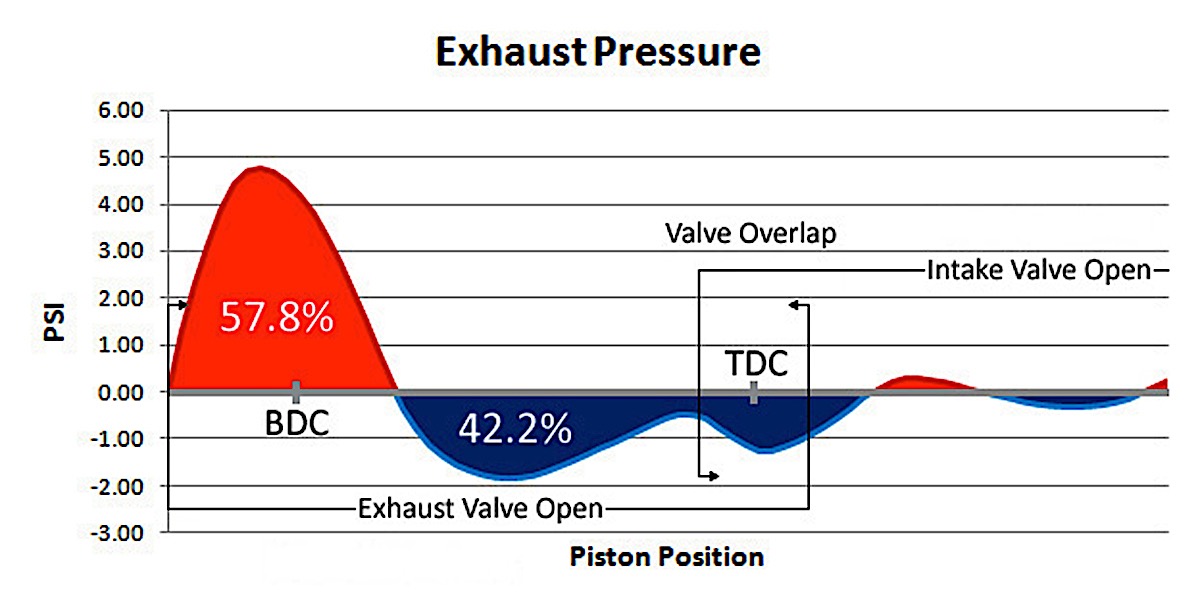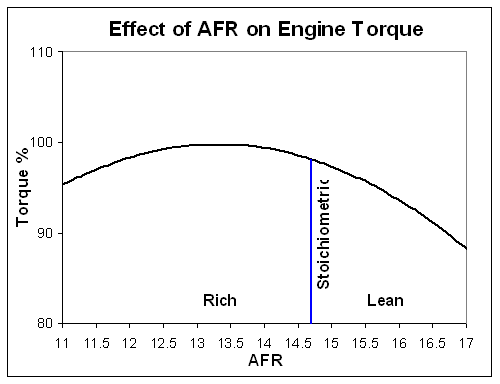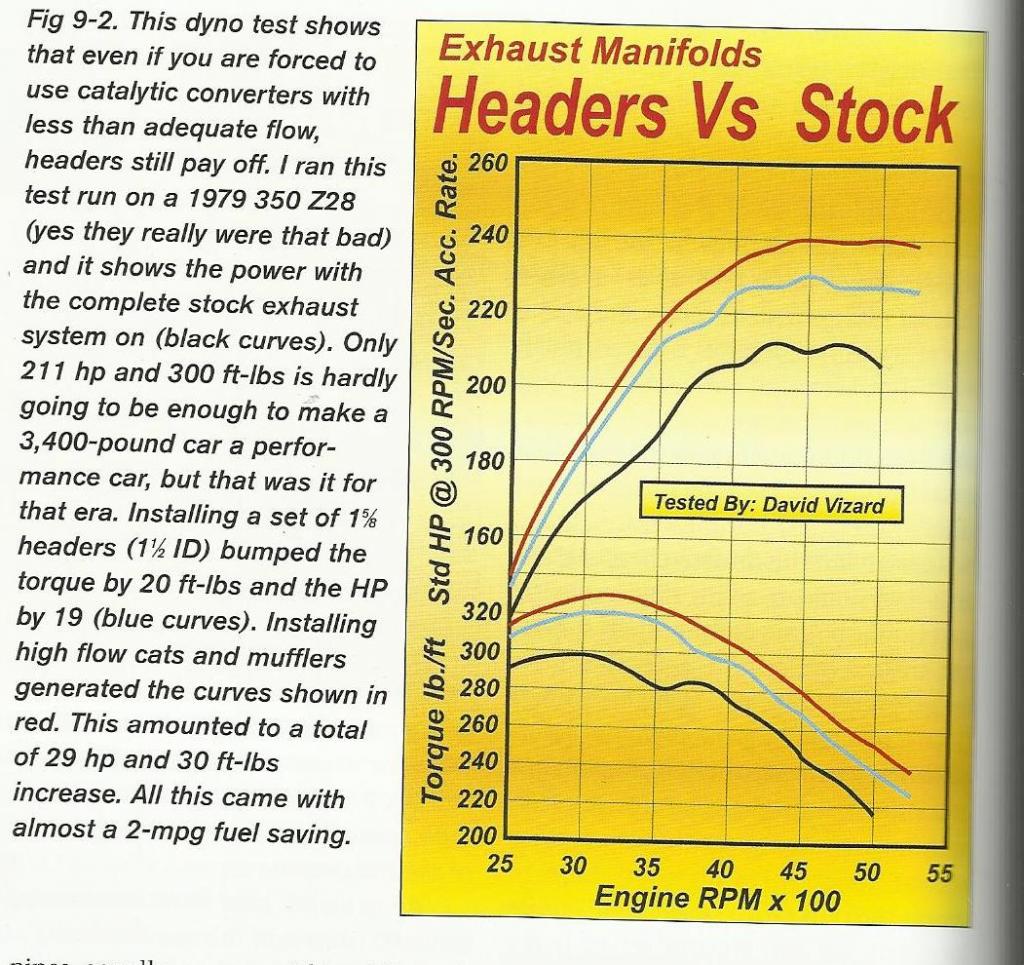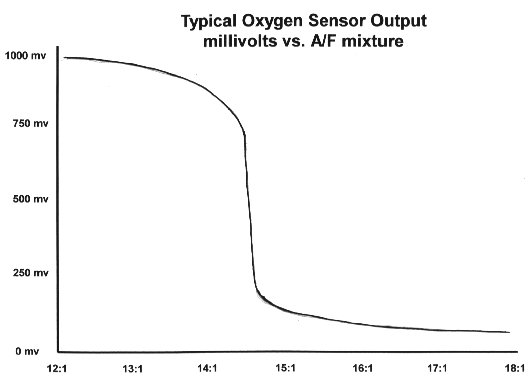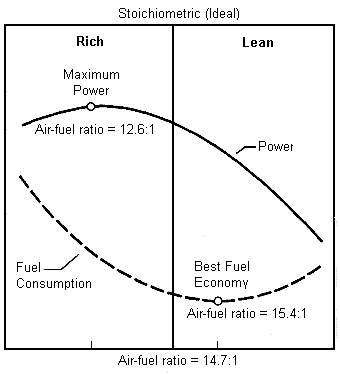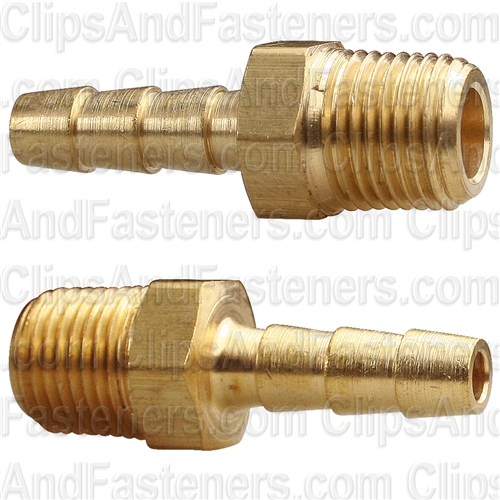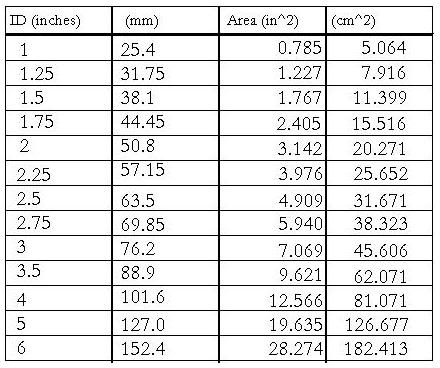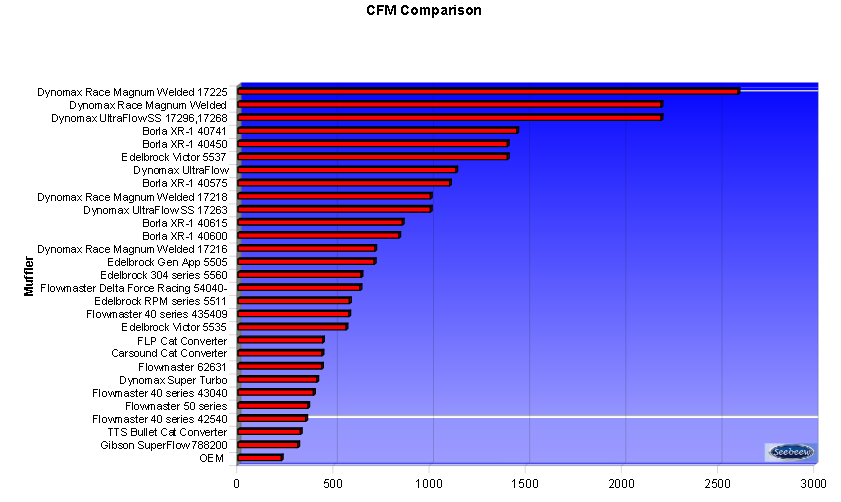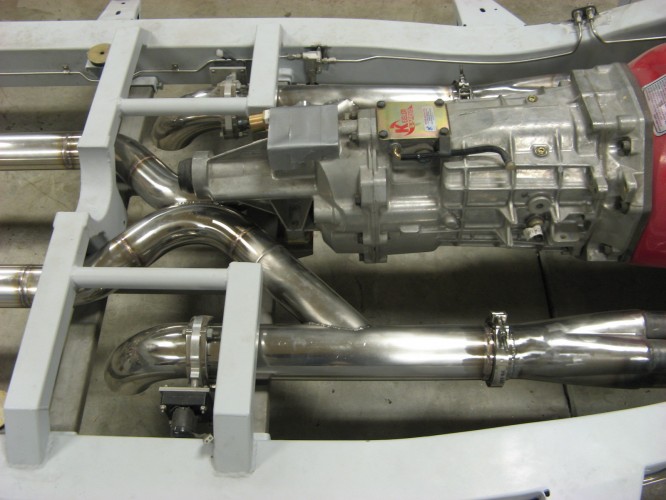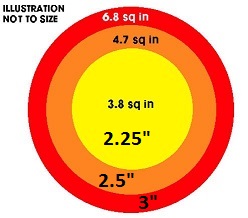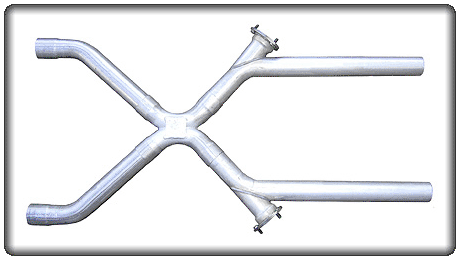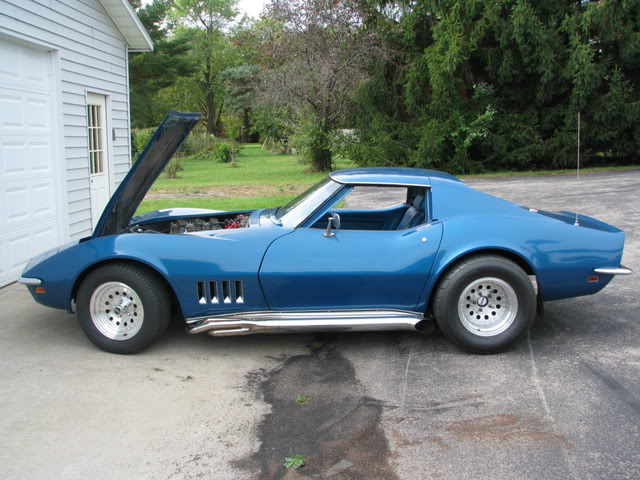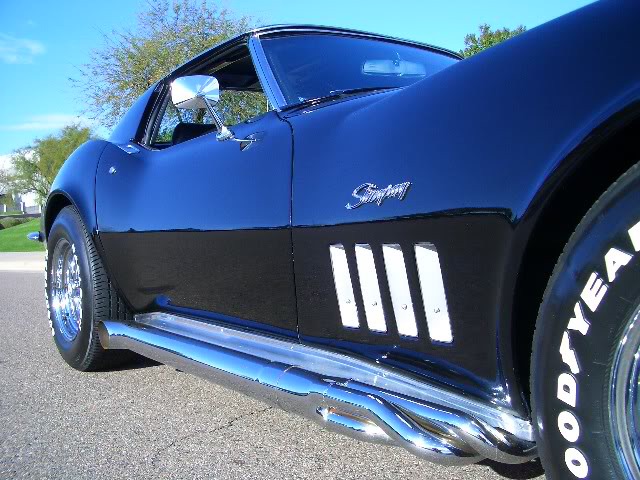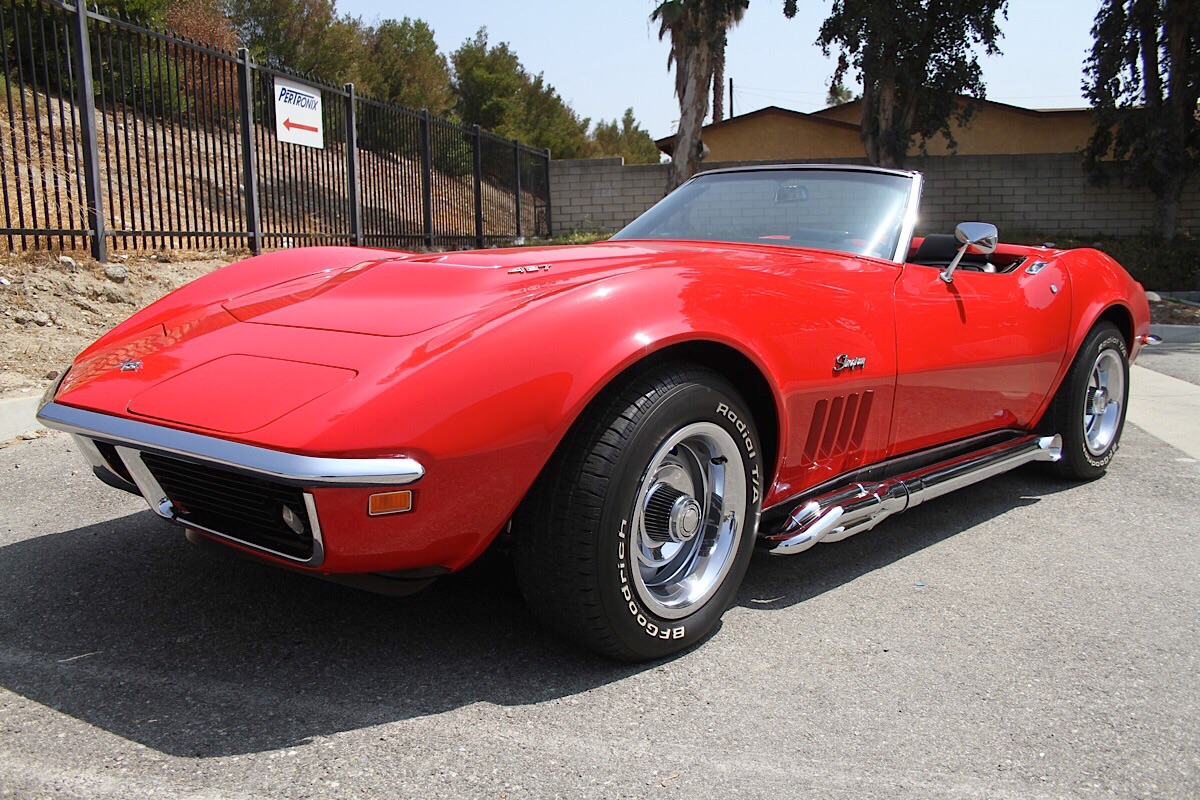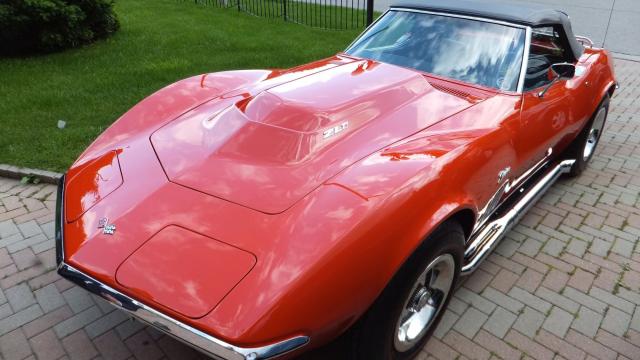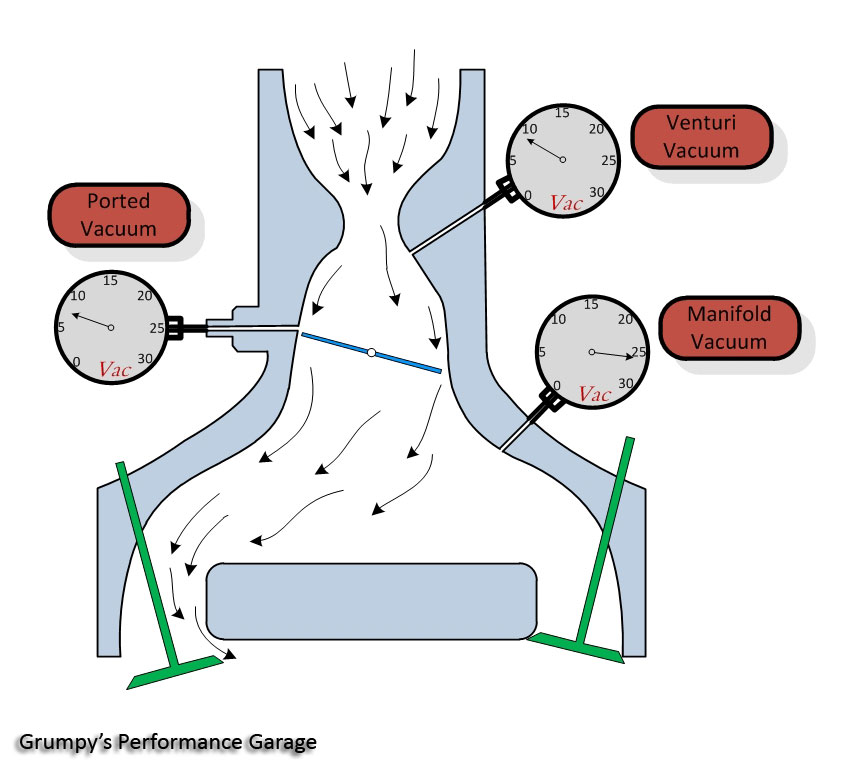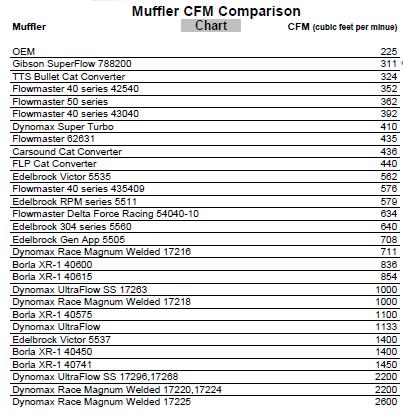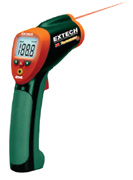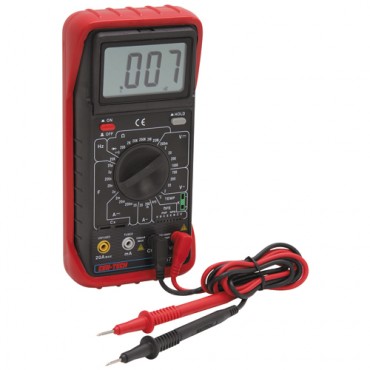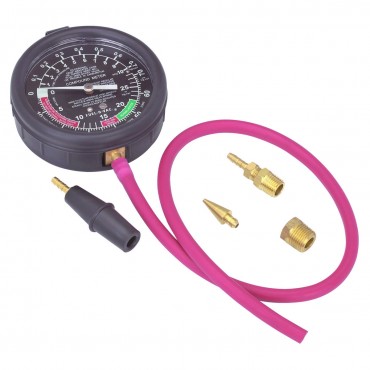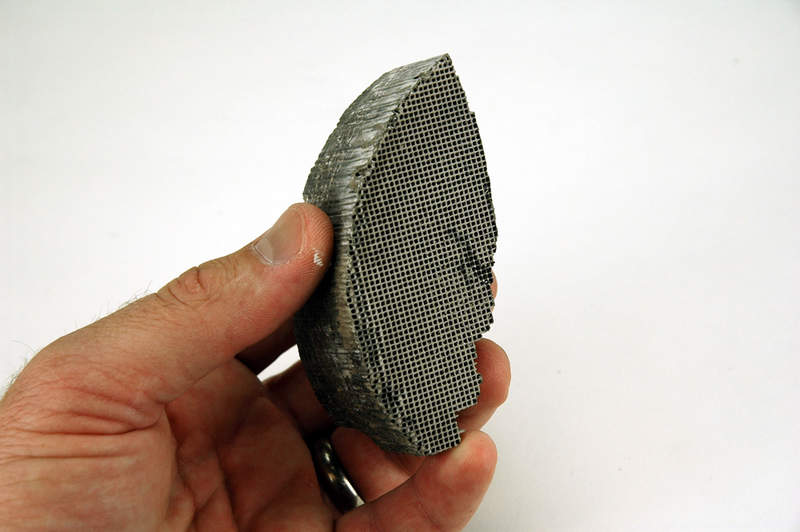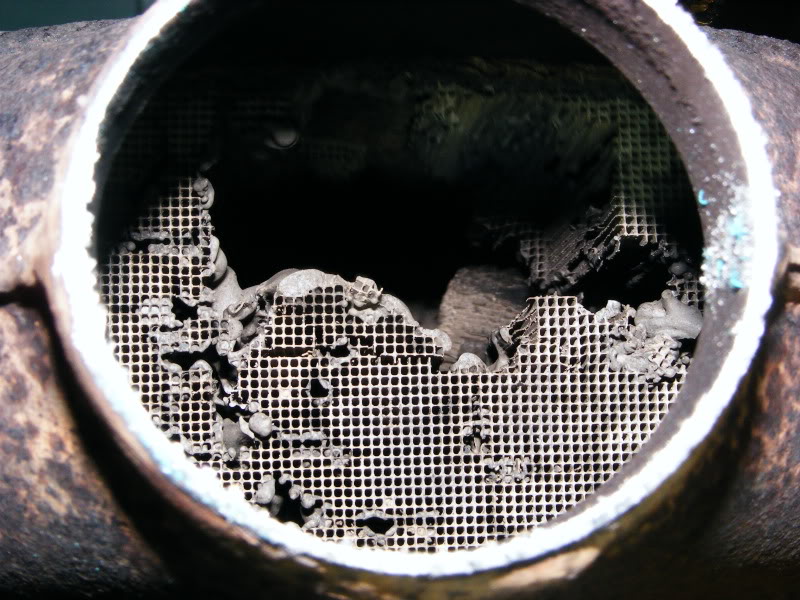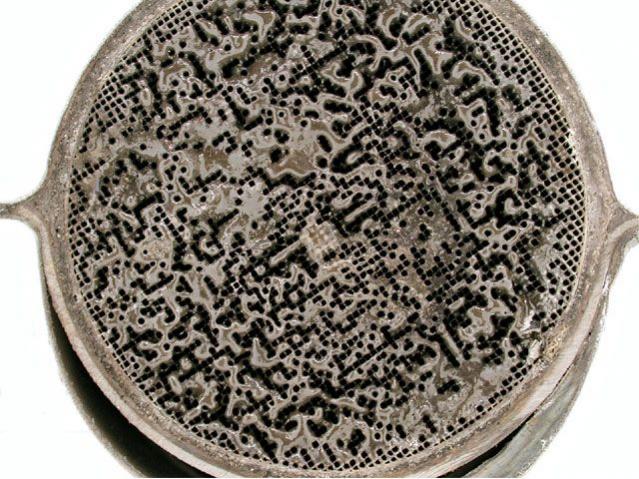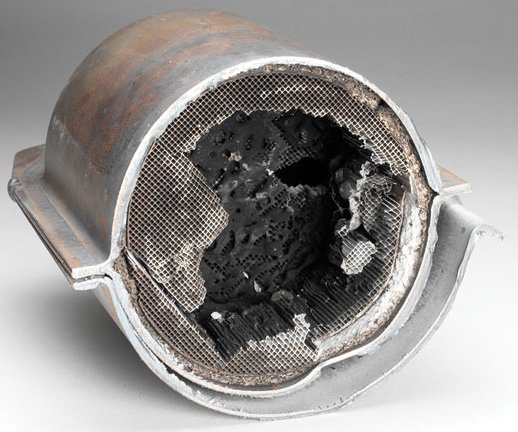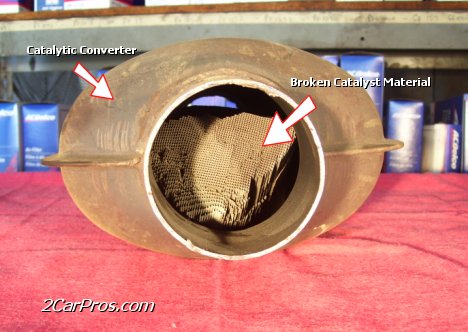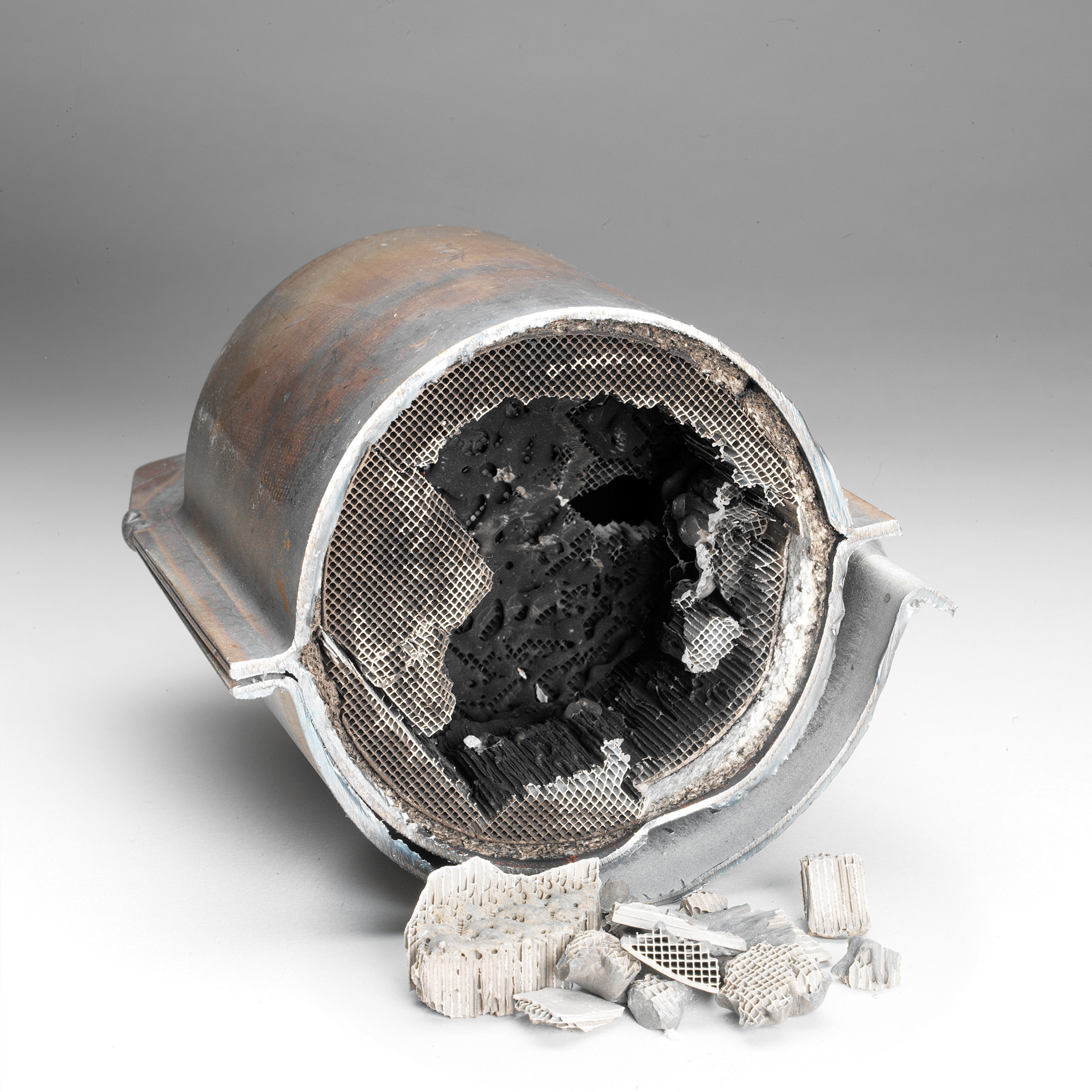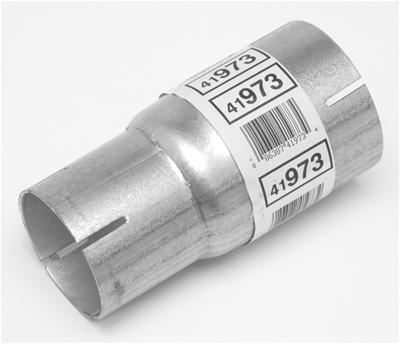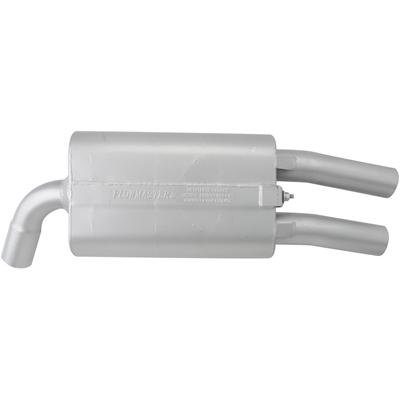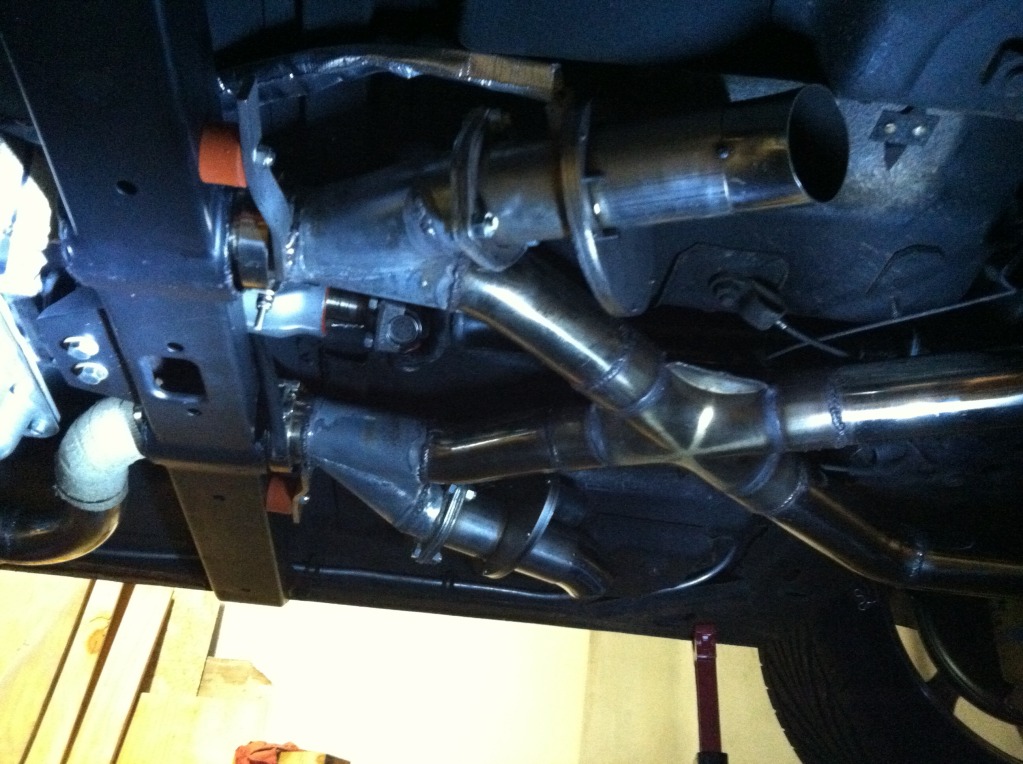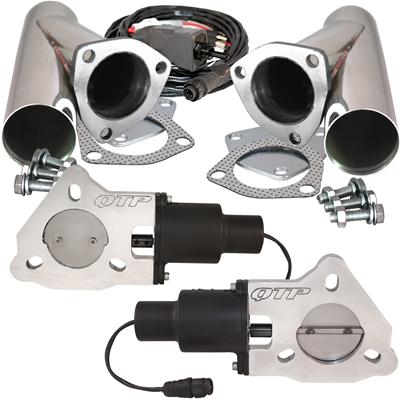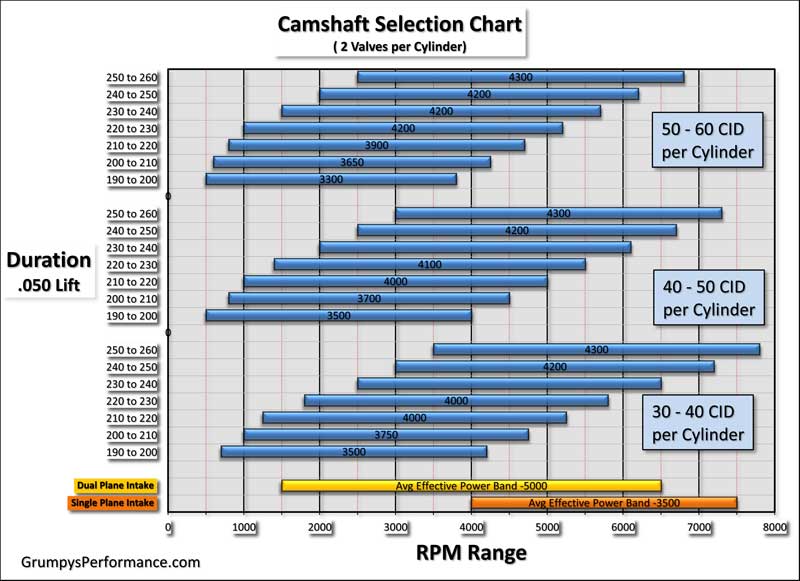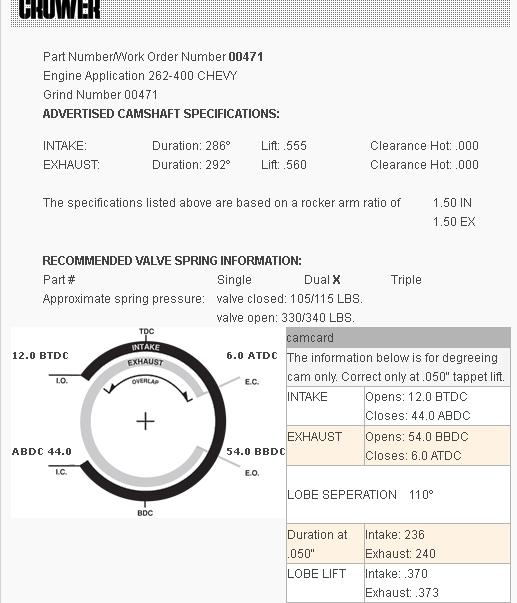any automotive engine will run best with little or no back pressure on the exhaust system ,
back pressure ALWAYS tends to reduce the cylinder fill and scavenging efficiency, this is not a guessing game.
you can simply measure back pressure in the exhaust every500 rpm from about 3000rpm to where ever your upper rpm limit lies, and if its ever over about 2 psi your losing power.
in fact in a properly designed exhaust system you'll ideally run a negative pressure behind the exhaust valves as they open,
helping the exhaust scavenge the cylinders, over most of the peak rpm range.
thus any significant back pressure is always going to reduce the potential power.
a correctly designed exhaust header can induce a low or negative pressure wave at the exhaust port as the exhaust valve opens to greatly increase cylinder scavenging and cylinder fill efficiency over a carefully designed in rpm band of a correctly tuned engine, provided the other factors like compression,cam timing and a low restriction exhaust system past the header collectors are used in a well matched combo. you can get a very good idea, as to your exhaust systems back pressure if you have a muffler shop in your area that will test the back pressure in your car for you with a pressure gauge and a DB meter for noise levels., but if you do, you will be one of the very few people that bother to test and deal in FACTS , PROVEN BY TESTING,rather than make guesses like the vast majority.
I'm certainly not picking on anyone here, but I see similar responses all the time,
when I ask what the back pressure in the header collectors reads on a gauge, at peak rpm levels,
and where guys just almost always assume the exhaust is fine simply because they read a chart some place that said for example a dual 2.5" exhaust will handle 400 hp or some other figure.
yes theres other factors at work here, but don,t over look a potentially restricted exhaust with out testing.
when I ask about back pressure at peak rpm levels and get that deer in the head lights look, and I,m amazed that almost everyone assumes that the exhaust must be fine! and so few guys take the time to get out a vacuum/pressure gauge , and plumb in a bung and port adapter and actually measure the exhaust back pressure at peak rpm levels, I can remember only one other guy I've dealt with in the last 45 years who had actually done that and used a fuel/air ratio meter to help tune his car before I got involved and asked about the exhaust back pressure and individual exhaust port temps. which can be very useful in locating tuning problems or fuel/air ratio distribution issues
heres the one I use and recommend
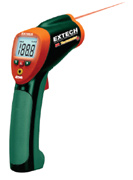
http://www.professionalequipment.com/ex ... ermometer/
you can,t make intelligent decisions without facts, and you get the facts by testing!
and it should be obvious that testing needs to be done under the current operational conditions at the rpm range that your concerned with.
A stock automotive exhaust might have over 5 psi OF BACK PRESSURE, AT PEAK RPMS WHERE EXHAUST FLOW IS AT MAX, or even more in a few cases, of back pressure in the exhaust system if measured at the collectors at max engine rpm, with a decent accurate pressure gauge, while a good aftermarket exhaust system will roughly cut that in half to the 1-3 psi range. BUT An excellent performance exhaust will get down in the 1-1.5 psi or LOWER restriction to flow range at max engine rpm. keep in mind that the efficiency of the headers scavenging the cylinders , and helping to draw in the following intake charge,is almost totally dependent on maintaining a very low flow restriction or back-pressure in the collectors ,especially at mid and upper rpm levels, any significant restriction to flow reduces the effectiveness of the headers ability to scavenge the cylinders by allowing the previous exhaust gas inertia mass to help drag in the next intake charge following it into that cylinder as it exits the cylinder thru the tuned headers primary's.
http://www.superchevy.com/how-to/ex...y-horsepower-but-which-is-best-for-your-ride/
http://www.epi-eng.com/piston_engine_technology/exhaust_system_technology.htm
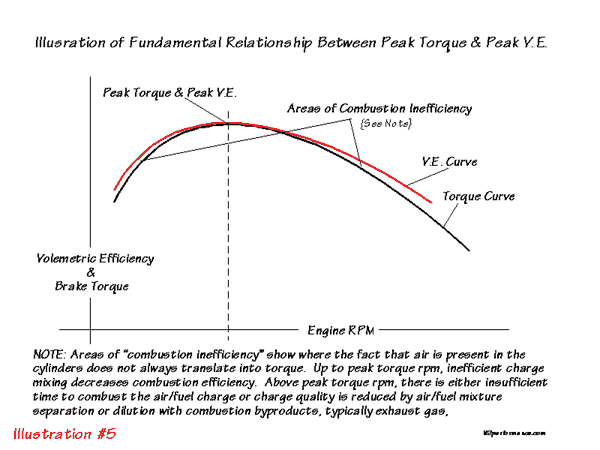
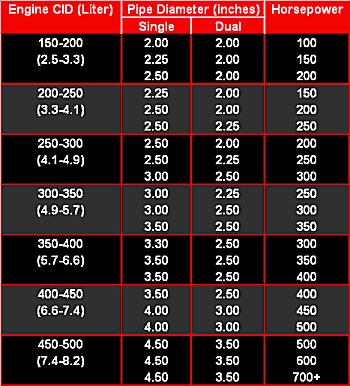
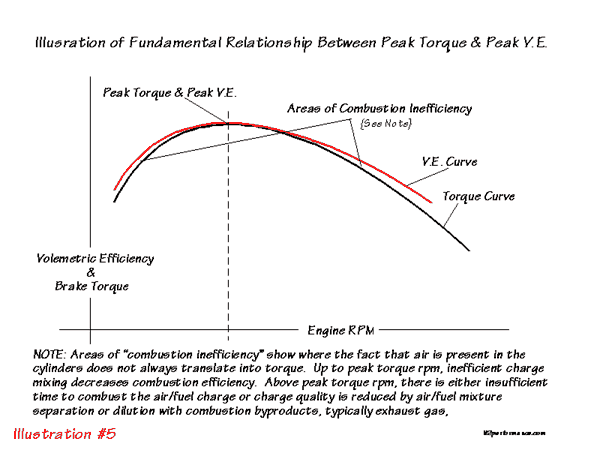
3" o.d = 2.87" diam. inside--approximately 6.5 sq inches of area
2.75 o.d = 2.62"diam. inside--approximately 5.4 sq inches of area
2.5 o.d = 2.37" diam. inside--approximately 4.4 sq inches of area
2.25 o.d = 2.12" diam. inside--approximately 3.5 sq inches of area
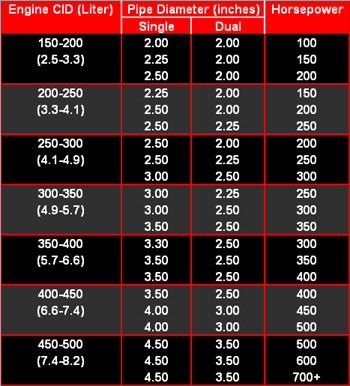
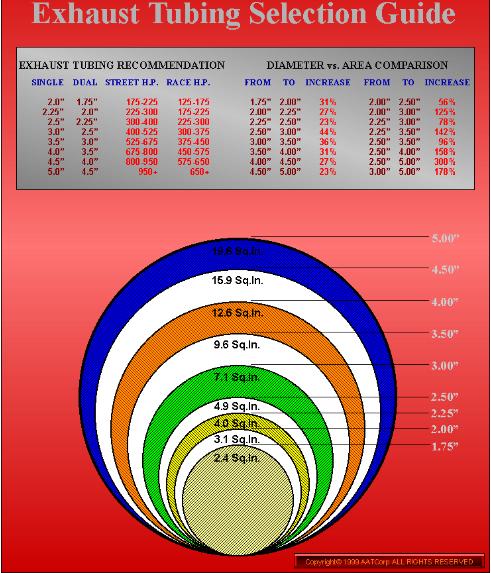
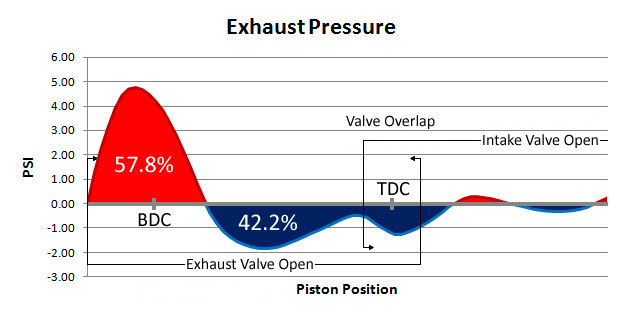
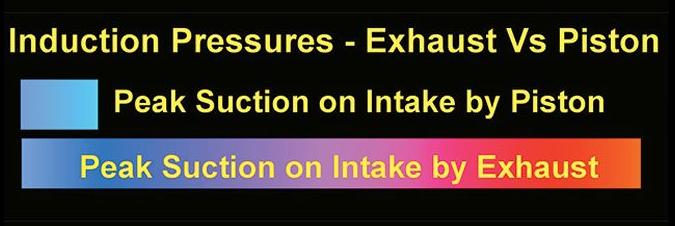
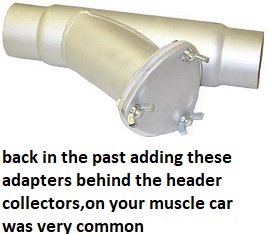
one of the most common and least tested, factors in most engine build ups is testing for restrictions to building increased horsepower. a huge problem is in restrictive exhaust systems that can not effectively allow the headers to scavenge the burnt gases from the cylinders, a good open collector on a well designed header can reduce the back pressure at the exhaust port to a negative pressure significantly increasing cylinder scavenging out the exhaust, thus helping draw in a fresh intake charge.
your sure to find some blog or posted info that shows if you go too large in exhaust pipe diameter,
the engine tends to lose some off idle to about 3000rpm,torque
this is not the result of a loss in back pressure ,
its the result of a loss in exhaust gas velocity and the resulting loss of inertial energy available to scavenge the cylinders,
this is NOT an issue with full length header,
s that will almost ALWAYS work more effectively with near zero back pressure,
past the header collectors, in a properly designed exhaust
is exhaust back pressure killing performance ?
obviously the volume of your engine exhaust increases with the rpm range, so while the stock exhaust may be fine under 5500rpm it surely may be restrictive in the upper rpms, once you've installed better flowing heads and added a cam, after all the engineers at G.M. were matching the stock components not aftermarket parts.
its a fast easy test that needs to be done and more than a few cars running older cats are having a restricted exhaust that's hurting your performance badly, and because the problem tends to build up slowly many people don,t notice the gradual power loss
first thing you'll need to realize is that the TEST POINT needs to be after the header collector and in front of the CAT AND MUFFLERS. next thing you need to know is that to get a valid answer you'll need to have a long connector hose so someone in the pass seat can CLOSELY WATCH the gauge as you accelerate under load (FLOOR THE CAR THRU THE FIRST 1-2 GEARS and watch the pressure surge. readings above 1psi mean somethings partly restricted, readings above 3psi are hurting your performance BADLY ENOUGH THAT YOU SHOULD CORRECT THE RESTRICTION.
you'll occasionally see dyno tests that show something like stock rams horn exhaust manifolds, compared to shorty headers and one or the other shows a slight advantage, the fact they don,t mention is that for headers to work correctly and scavenge the engines cylinders at higher rpms there needs to be very little back pressure , in the exhaust system behind the headers, and if theres almost any restriction the headers can,t scavenge the cylinders efficiently. shorty headers and stock exhaust manifolds effectively use the inertia of the trapped exhaust gases in the stock exhaust to help drag out or scavenge the cylinders but its only effective at low and mid rpm ranges, it tends to be rather restrictive after about 4000rpm in most cars
the test kit is about $50.00
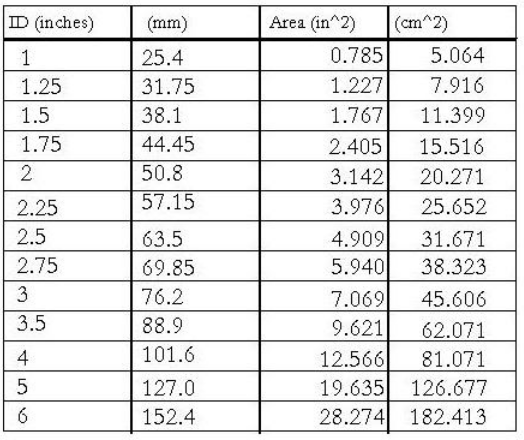
http://www.ntxtools.com/fuelsystem/tu24a.htm
OR SAVE SOME CASH
http://www.harborfreight.com/cpi/ctaf/d ... mber=93547
http://www.veryuseful.com/mustang/tech/engine/exhaustScavenging.pdf
YES TAKING THE TIME TO READ THRU THESE LINKS and SUB LINKS IS WELL WORTH THE EFFORT
I found this info posted else ware but its good info
Back pressure: The myth and why it's wrong.
I. Introduction
One of the most misunderstood concepts in exhaust theory is backpressure. People love to talk about backpressure on message boards with no real understanding of what it is and what it's consequences are. I'm sure many of you have heard or read the phrase "Hondas need backpressure" when discussing exhaust upgrades. That phrase is in fact completely inaccurate and a wholly misguided notion.
II. Some basic exhaust theory
Your exhaust system is designed to evacuate gases from the combustion chamber quickly and efficently. Exhaust gases are not produced in a smooth stream; exhaust gases originate in pulses. A 4 cylinder motor will have 4 distinct pulses per complete engine cycle, a 6 cylinder has 6 pules and so on. The more pulses that are produced, the more continuous the exhaust flow. Backpressure can be loosely defined as the resistance to positive flow - in this case, the resistance to positive flow of the exhaust stream.
III. Backpressure and velocity
Some people operate under the misguided notion that wider pipes are more effective at clearing the combustion chamber than narrower pipes. It's not hard to see how this misconception is appealing - wider pipes have the capability to flow more than narrower pipes. So if they have the ability to flow more, why isn't "wider is better" a good rule of thumb for exhaust upgrading? In a word - VELOCITY. I'm sure that all of you have at one time used a garden hose w/o a spray nozzle on it. If you let the water just run unrestricted out of the house it flows at a rather slow rate. However, if you take your finger and cover part of the opening, the water will flow out at a much much faster rate.
The astute exhaust designer knows that you must balance flow capacity with velocity. You want the exhaust gases to exit the chamber and speed along at the highest velocity possible - you want a FAST exhaust stream. If you have two exhaust pulses of equal volume, one in a 2" pipe and one in a 3" pipe, the pulse in the 2" pipe will be traveling considerably FASTER than the pulse in the 3" pipe. While it is true that the narrower the pipe, the higher the velocity of the exiting gases, you want make sure the pipe is wide enough so that there is as little backpressure as possible while maintaining suitable exhaust gas velocity. Backpressure in it's most extreme form can lead to reversion of the exhaust stream - that is to say the exhaust flows backwards, which is not good. The trick is to have a pipe that that is as narrow as possible while having as close to zero backpressure as possible at the RPM range you want your power band to be located at. Exhaust pipe diameters are best suited to a particular RPM range. A smaller pipe diameter will produce higher exhaust velocities at a lower RPM but create unacceptably high amounts of backpressure at high rpm. Thus if your powerband is located 2-3000 RPM you'd want a narrower pipe than if your powerband is located at 8-9000RPM.
Many engineers try to work around the RPM specific nature of pipe diameters by using setups that are capable of creating a similar effect as a change in pipe diameter on the fly. The most advanced is Ferrari's which consists of two exhaust paths after the header - at low RPM only one path is open to maintain exhaust velocity, but as RPM climbs and exhaust volume increases, the second path is opened to curb backpressure - since there is greater exhaust volume there is no loss in flow velocity. BMW and Nissan use a simpler and less effective method - there is a single exhaust path to the muffler; the muffler has two paths; one path is closed at low RPM but both are open at high RPM.
IV. So how did this myth come to be?
I often wonder how the myth "Hondas need backpressure" came to be. Mostly I believe it is a misunderstanding of what is going on with the exhaust stream as pipe diameters change. For instance, someone with a civic decides he's going to uprade his exhaust with a 3" diameter piping. Once it's installed the owner notices that he seems to have lost a good bit of power throughout the powerband. He makes the connections in the following manner: "My wider exhaust eliminated all backpressure but I lost power, therefore the motor must need some backpressure in order to make power." What he did not realize is that he killed off all his flow velocity by using such a ridiculously wide pipe. It would have been possible for him to achieve close to zero backpressure with a much narrower pipe - in that way he would not have lost all his flow velocity.
V. So why is exhaust velocity so important?
The faster an exhaust pulse moves, the better it can scavenge out all of the spent gasses during valve overlap. The guiding principles of exhaust pulse scavenging are a bit beyond the scope of this doc but the general idea is a fast moving pulse creates a low pressure area behind it. This low pressure area acts as a vacuum and draws along the air behind it. A similar example would be a vehicle traveling at a high rate of speed on a dusty road. There is a low pressure area immediately behind the moving vehicle - dust particles get sucked into this low pressure area causing it to collect on the back of the vehicle. This effect is most noticeable on vans and hatchbacks which tend to create large trailing low pressure areas - giving rise to the numerous "wash me please" messages written in the thickly collected dust on the rear door(s).
VI. Conclusion.
SO it turns out that Hondas don't need backpressure, they need as high a flow velocity as possible with as little backpressure as possible.
Turbo Exhaust Systems:
Some of you asked for a better explanation about restriction in a turbo exhaust, so here 'goes. To sum it all up, on a turbo car, the tighter and more restricted the exhaust housing of the turbo is, the faster you're going to spool your turbo... because the restricted gasses escape through the exhaust housing with more velocity (much like the garden hose description quoted above)... but with this restriction comes the downside. Less exhaust volume will be able to fit through that turbine housing once the turbo is spooled and starts squishing more air through the intake.
This is where the wastegate comes into play. The wastegate is actuated BEFORE the exhaust wheel in the exhaust housing. When it opens, whatever the diameter of your wastegate is gets added to your exhaust piping. Effectively increasing the capacity of the exhaust provided that everything downstream is large enough in diameter to handle it the extra flow. The main reason it does this is to prevent over-spooling the turbo. Once the turbo reaches its efficiency, it doesn't need to flow all the extra gasses through the turbine wheel, so the wastegate allows you to route the exhaust around the turbo... if it can't route enough exhaust around the turbo (restricted wastegate) then too much exhaust gas will be forced by the exhaust wheel and BOOST CREEP will occur as your turbo over-spools.
One way to prevent boost creep is to port the wastegate housing (if you have an internally gated turbo) or to replace the wastegate with a bigger unit. If that still doesn't work, then the problem is likely going to be a restriction in the exhaust downstream from the wastegate. Many overboosted car owners prefer to vent their wastegate dumps to the atmosphere. Not only is it illegal to bypass your catalytic converter, but it's loud as hell, gets your engine bay filthy, and clogs up your K&N like nobody's business; however, it nearly eliminates boost creep. It's a cheap and easy solution that fixes boost creep on a race car.
The best solution to boost creep is to route your wastegate dump past the catalytic converter and back into the exhaust. It will be a custom setup. Nobody makes this. Make it look clean and you'll pass emissions because they don't run your car hard enough to open the wastegate when doing emissions testing. You have to reach full boost for the wastegate to open, and since the exhaust runs through the cat until the wastegate opens, it all gets "cleaned" before it reaches the sniffer. With this setup, the wastegate will also be much quieter because it still runs through the muffler, and you won't trash your engine bay with black caustic funk.
Putting a separate catalytic converter on your wastegate dump is a stupid idea because you'll never get it hot enough to "light off" and start converting the carbon monoxide... so don't get any crazy ideas and create unnecessary exhaust restrictions.
Once compressed air comes into the mix with an engine, exhaust tuning has much less to do with making power. So what if you can milk another 3-5 hp out of a car with a tuned exhaust... the benefits of making an engine sustain an insane final compression ratio (boosted air x compression in the combustion chamber) has much more affect on making power if you can just get rid of the extra gasses it produces. Bigger is almost always better on a turbo setup. The only place where it isn't good is on the exhaust wheel where too big can = no chance of spooling your oversized turbo any time this year.
READ THE LINKS OR MISS A GREAT DEAL OF USEFUL INFO
http://www.uucmotorwerks.com/html_produ ... uemyth.htm
http://www.formula1-dictionary.net/exhaust_road_perf.html
ITS NOT RARE TO LOOSE 20% or more of your potential hp to a restricted cat on your exhaust, or restrictive mufflers or exhaust pipes that are too small and restrictive, no header can effectively scavenge your engine unless its got less than about 2 psi of back pressure at the peak rpm range, on most muscle cars youll want a 2.5"-3" diam. exhaust system with an (X) pipe as close to the header collectors as clearances under the car allow as a MINIMUM size exhaust and its been my experience that is RARE for a 3" dual exhaust with an (X) pipe to NOT allow a hot combo with over 400hp to produce some mid and upper rpm power gains.
if the exhaust pipes too small in cross sectional area the pipe acts like a long rather restrictive collector on the headers, this may be good for low rpm cylinder scavenging, but it usually kills peak hp potential, its best to tune the engines intake and exhaust to match the gearing and cam timing power curve. in an ideal set up the exhaust system beyond the header collectors has a very low restriction to flow, and there will be an (X) pipe to effectively double the exhaust cross sectional area to significantly lower resistance to exhaust flow restriction still further, to increase the header,s ability to scavenge the cylinders efficiently in the intended power & rpm band, keep in mind your goal is or should be in most cases to maximize the torque in the intended rpm range that your engine combo produces
Id highly suggest adding one of these 3" (X) to most exhaust systems
http://store5.yimg.com/I/exhaustpros_1769_9241795
looking thru an (X) pipe
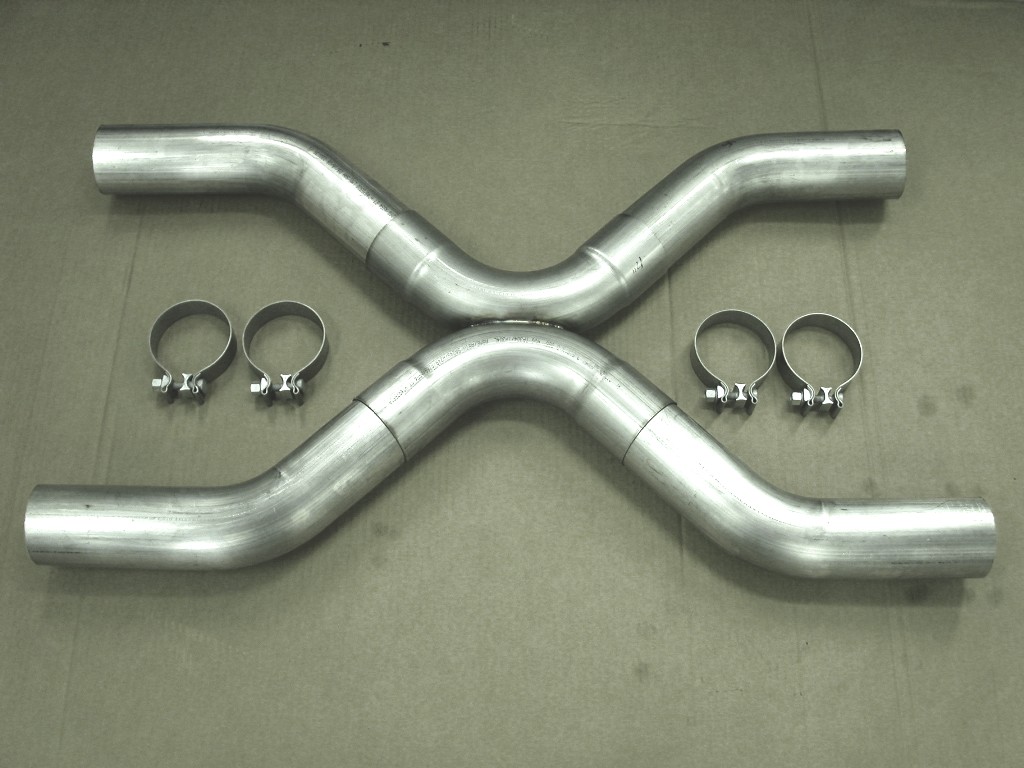
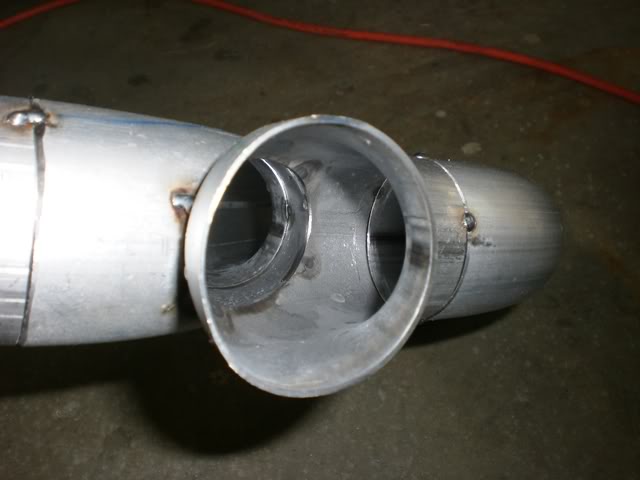
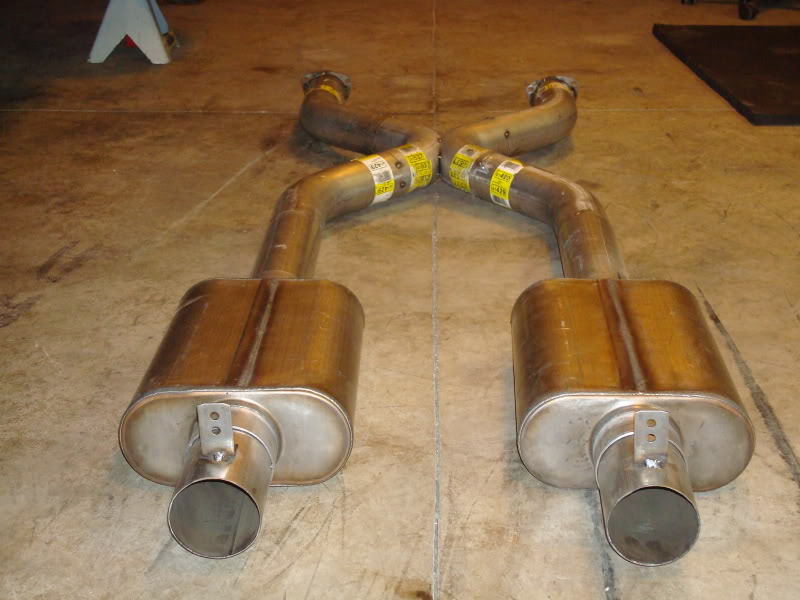
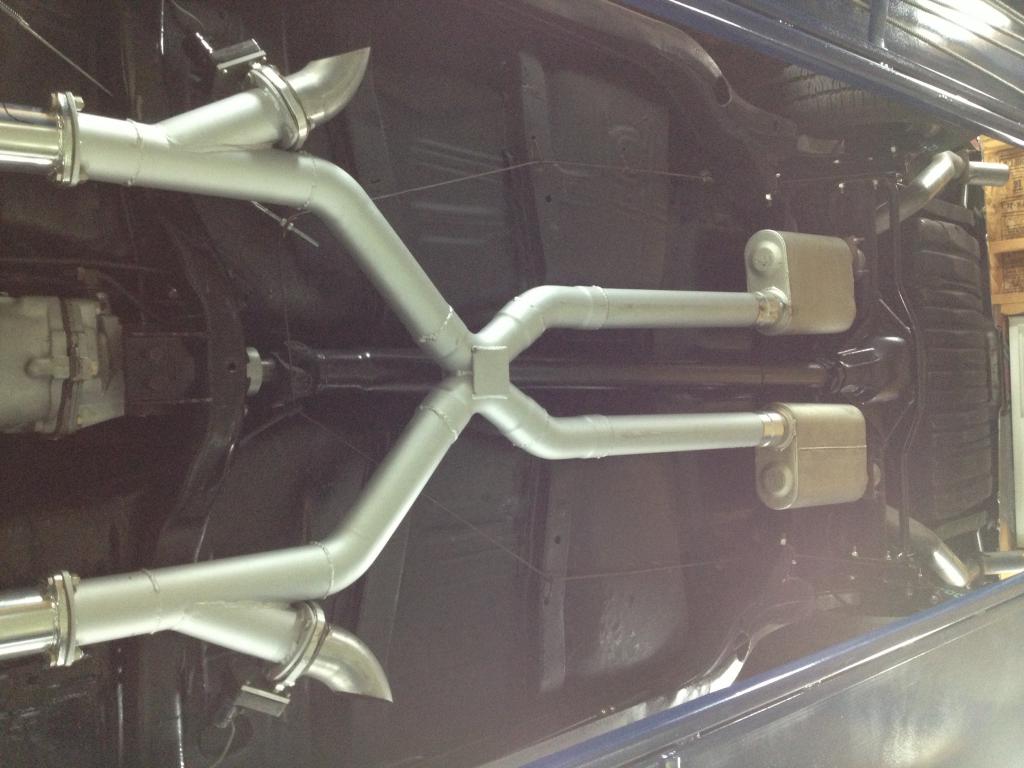

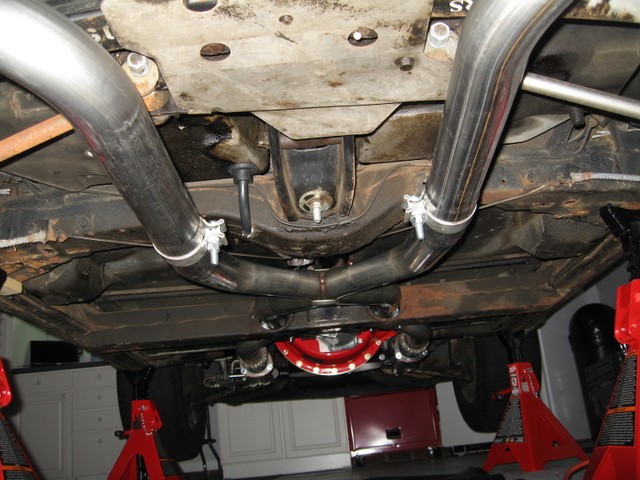
A CORRECTLY TUNED SET OF HEADERS , MATCHED TO A CORRECTLY DESIGNED CAM TIMING HAS A SIGNIFICANT EFFECT ON INTAKE FLOW AND CYLINDER SCAVENGING EFFICIENCY, EXHAUST SCAVENGING CAN BE 5 TIMES STRONGER THAN THE PISTON, MOVEMENT INDUCED NEGATIVE PRESSURE (VACUUM) IN THE INTAKE RUNNERS
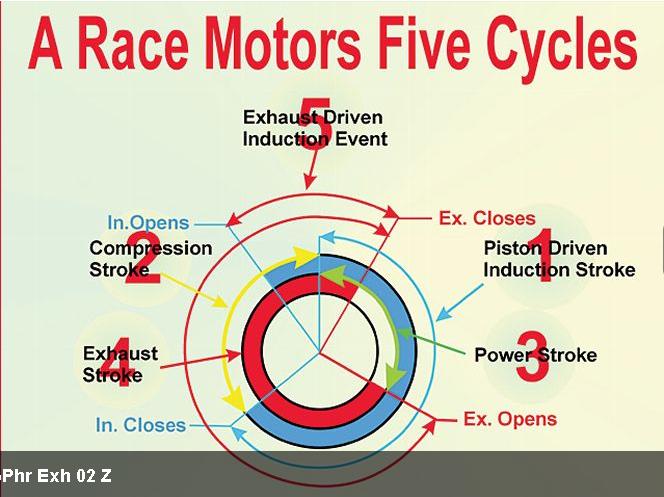

Id also point out that cam timing matched to the exhaust scavenging has a huge effect on potential intake flow rates


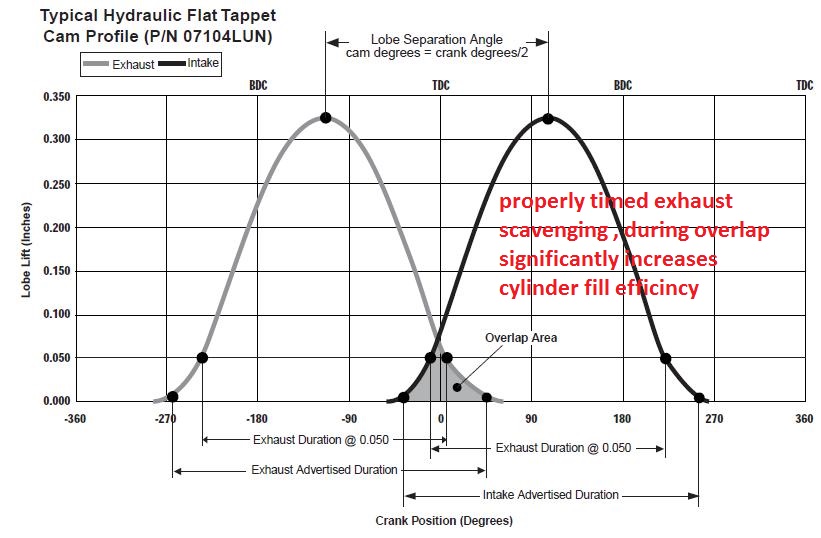
YES I KNOW YOU DON,T WANT TO READ THRU SUB LINKS,
BUT THEY CONTAIN A HUGE AMOUNT OF INFO
SO YOUR ONLY HURTING YOURSELF BY IGNORING THE RESOURCE
http://www.aa1car.com/library/exhaust_backpressure.htm
http://victorylibrary.com/mopar/header-tech-c.htm
http://www.popularhotrodding.com/engine ... 505em_exh/
http://www.pontiacstreetperformance.com/psp/exhaust.html
http://www.thrashercharged.com/tech_htm/exhaust.shtm
http://garage.grumpysperformance.com/index.php?threads/cooler-denser-air.8961/
http://www.pontiacstreetperformance.com ... haust.html
http://www.mk5cortinaestate.co.uk/calculator5.php
http://www.tuneruniversity.com/blog/201 ... -upgrades/
http://www.superchevy.com/technical/eng ... 05phr_exh/
http://www.nsxprime.com/FAQ/Miscellaneo ... theory.htm
viewtopic.php?f=56&t=3049&p=8053&hilit=oxygen+sensors#p8053
http://www.veryuseful.com/mustang/tech/ ... enging.pdf
http://www.boyleworks.com/ta400/psp/exhaust.html
http://www.aa1car.com/library/exhaust_backpressure.htm
http://www.superchevy.com/technical/eng ... index.html
http://www.tuneruniversity.com/blog/201 ... -upgrades/
http://www.pontiacstreetperformance.com ... haust.html
http://www.underhoodservice.com/Article ... nosis.aspx
http://www.centuryperformance.com/exhau ... g-137.html
http://www.asia.donaldson.com/en/exhaus ... 053747.pdf
http://www.burnsstainless.com/TechArticles/Theory/theory.html
http://grapeaperacing.com/GrapeApeRacing/tech/exhaustheaders.cfm
the short answer is ANY BACK PRESSURE IS BAD!
what your trying to do with a correctly designed exhaust is to have the majority of the exhaust system act like extended collectors on the headers, in effect using the inertia of the hot exhaust pulses from each cylinder to cause a cyclic low pressure wave to be timed to assist the next firing cylinders to scavenge the cylinders
keep in mind installing an (X) almost increases the effective cross sectional area,of the dual exhaust ,to double what it had been behind a single header collector, by doubling the area that the exhaust flow sees, dropping the restriction to flow almost in half
http://www.antechlabs.com/K0GFM/pipechart.gif
heres the info you need,
length
http://www.engr.colostate.edu/~allan/fluids/page7/PipeLength/pipe.html
diam.
well worth reading
http://victorylibrary.com/mopar/header-tech-c.htm
http://home.flash.net/~ivc1/cobra/xpipes.html
http://www.superchevy.com/technical/eng ... index.html
http://www.s262612653.websitehome.co.uk ... /heads.htm
to adjust for your altitude
http://rshelq.home.sprynet.com/density_altitude.htm
and if you want to get it perfect you should use your DYNAMIC COMPRESSION RATIO VOLUME in the formula at the rpms for peak hp that your engine makes
http://cochise.uia.net/pkelley2/DynamicCR.html
most of the time that comes out close to the same as the static cylinder volume at the peak torque f.y.i.
LET ME ASK THIS QUESTION?
WHATS THE FIRST THING YOU DO AT THE TRACK TO YOUR EXHAUST SYSTEM?
you open the headers to have less back pressure correct!!
BACK PRESSURE IS BAD, BAD,BAD, the idea has gotten around that you need back pressure to build torque, FALSE!!!!!! that IDEA was prevalent because if you stick too large of an exhaust pipe on a low rpm engine it loses the ability to scavage the cylinders with the exhaust gas pulse in the exhaust with stock exhaust manifolds, some how the old wife's tale got around that you needed back pressure...FALSE.. what you need was EFFECTIVE CYLINDER SCAVENGING which the smaller tail pipe diam. was providing by acting like the collector on a set of headers!if you have headers , especially full length headers with a merge type collector you can,t make the exhaust too large,THINK ABOUT IT! the first thing you do at the track is un-cork your headers....why? because YEARS OF TESTING PROVES, less BACK PRESSURE MAKES MORE HP WITH HEADERS!!!! now some one is saying yeah but that's at the track and your running the engine at 5000rpm-6500rpm , well true and a good point because we typically only run 1000rpm-3000rpm on the street but look here,your stock exhaust if fine for the original intended 1000rpm-5000rpm band in most cases , but increase engine displacement,change the cam timing , on that added displacement,increase cylinder head and intake flow rates etc. and buzz that engine to 6000rpm and you'll soon find the stock exhaust systems pathetic at the upper rpm ranges, causing a very noticeable restriction to exhaust flow.
guys think simply adding headers cures this, but headers can,t function at near full potential efficiency unless the exhaust system mounted behind the collectors offers only a very minimal restriction. gaining 40hp or more is very common when adding headers and a low restriction exhaust system.
http://www.engr.colostate.edu/~allan/fluids/page7/PipeLength/pipe.html
what it shows clearly is the collector on a low rpm engine needs to be about 10ft long for max effect so you need an exhaust that works with a collector that's about 20" long at 6000rpm and one 10 feet long at idle, THAT'S WHERE THE IDEA OF TOO LARGE A EXHAUST comes from but as long as you follow these rules you'll be fine, READ THIS,
http://victorylibrary.com/mopar/header-tech-c.htm
btw Im writing this like this to get you guys to think about it then we will look into the answers of how to get both ends of the rpm range covered and yes Im leaving out some info on purpose
http://autolounge.net/calculators/exhau ... izing.html
most exhaust pipe is 16 gauge, or .065 wall thickness
http://www.engineersedge.com/gauge.htm
How do you judge the i.d of a pipe?
3" o.d = 2.87" diam. inside
2.75 o.d = 2.62"diam. inside
2.5 o.d = 2.37" diam. inside
2.25 o.d = 2.12" diam. inside
is exhaust back pressure killing performance ?
its a fast easy test that needs to be done and more than a few cars running older cats are having a restricted exhaust that are noticeably hurting your performance , and because the problem tends to build up slowly many people don,t notice the gradual power loss
first thing you'll need to realize is that the TEST POINT needs to be after the header collector and in front of the CAT AND MUFFLERS. next thing you need to know is that to get a valid answer you'll need to have a long connector hose, and a reliable pressure gauge, so someone in the pass seat can CLOSELY WATCH the gauge as you accelerate under load (FLOOR THE CAR THRU THE FIRST 1-2 GEARS and watch the pressure surge. back pressure readings above 1psi mean somethings partly restricted, readings above 3psi are hurting your performance noticeably.
this gauge will work
http://www.harborfreight.com/cpi/ctaf/d ... mber=93547
you drill a 1/8" hole in the collector to insert a temporary test probe made from 1/8" copper tubing attached to a section of vinyl hose back to the test gauge, angle or point the end of the test probe tube,toward the exhaust exit not the engine, that hole you drill for test access can easily be brazed closed after the test, OR in an ideal world you weld a 1/8" Nation Pipe Thread bung on the collector, so you can test with a removable screw threaded adapter and close the threaded bung with a brass plug when your done, a buddy reads the gauge with the line run into the passenger seat and the gauge or in an ideal world you mount the gauge in the car as a reference for tuning
the test kit is about $50.00
http://www.jdsdiagnostic.com/eptspage.htm
ITS NOT RARE TO LOOSE 20% or more of your hp to a restricted cat
your unlikely to lose much if any hp especially if you install an (H) pipe just before the reduction in tail pipe dia. and use a gradual reducer to change from 3' to 2.5" mostly because the exhaust gases have cooled a great deal by the time they reach that point in your exhaust system and with that heat loss a reduction in volume and potential back pressure
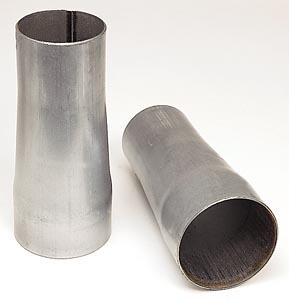
http://www.jegs.com/cgi-bin/ncommerce3/ProductDisplay?prrfnbr=1313&prmenbr=361
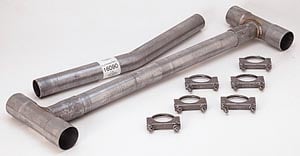
http://www.jegs.com/cgi-bin/ncommerce3/ProductDisplay?prrfnbr=1306&prmenbr=361
http://store.yahoo.com/exhaustpros/hustxpi.html
http://store5.yimg.com/I/exhaustpros_1775_13682224
http://www.summitracing.com/search/?keyword=exhaust cones&dds=1
IF your trying to reduce noise levels, you can buy or fabricate these cones that tend to break up and reduce exhaust noise, once installed in the exhaust, without producing much of a restriction since the total surface area of the mini holes is greater the the pipes cross sectional area
the tabs can be tack welded or sheet metal screw attached, and adding an (X) pipe near the collectors and an additional (H) near the muffler entrance point tends to mellow the tone
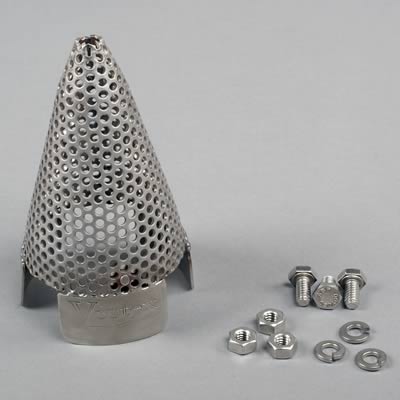
being a bit pragmatic here, Id say that its rather rare for a hot street/strip car combo with 400 cubic inches or less and under 500 hp that probably 75% of us drive to need an exhaust larger than dual 3" pipes with an (X) and that's usually what Ive found works on most street strip cars.
now obviously if your building something significantly larger or more powerful you'll want to do some calculation before selecting an exhaust design, but what always amazes me is how few people bother to buy and use a simple vacume/pressure gauge to actually test and measure back pressure.
without, testing and having the facts,and knowing what your dealing with it seems foolish to rush out and spend hundreds of dollars on a new exhaust that may or may not solve your problems or to ignore a problem that you can easily test for and verify before spending any money on a problem you can prove is caused by a restrictive exhaust system, basing your parts selection on what your trying to accomplish, and whats required to reach your goal, rather than random guess work seems to be the cheaper route in the long run in my opinion.
drilling a small easily re-welded test hole in the header collector , or an adapter on an oxygen sensor bung gives you access for testing back-pressure
you might be surprised at what a few tests show you and how much time and money you can avoid wasting
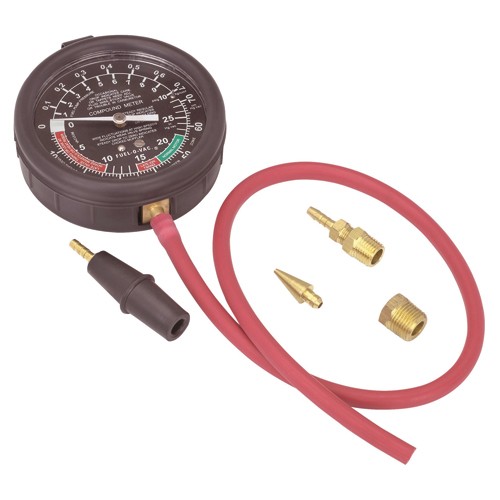
http://www.harborfreight.com/fuel-pump- ... 93547.html
http://www.harborfreight.com/fuel-pump- ... 93547.html
a simple vacuum gauge CONNECTED TO MANIFOLD VACUUM will be a surprisingly accurate tool to diagnose problems,providing you know how to use it.
you don,t need an expensive tool, while your testing you may as well connect it to your carbs intake plenum or throttle body plenum as a next test, because if your pulling over about 1.5" of vacuum at wide open throttle the carb or throttle body your using is a bit restrictive, and if you restrict the exhaust or intake flow it hurts power[/color]
BTW if youve got one of these nearly worthless (for a true high hp application)fuel filters, that can break and cause a fire hazard,
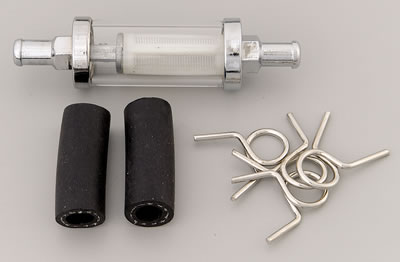
they can be quite useful inserted in the vacume line between the exhaust or intake your testing and the gauge your testing with as they make a rather effective pulse damper or reducer that limits the gauge needle rapidly twitching making it harder in some applications to get a clear reading
A CORRECTLY TUNED SET OF HEADERS , MATCHED TO A CORRECTLY DESIGNED CAM TIMING HAS A SIGNIFICANT EFFECT ON INTAKE FLOW AND CYLINDER SCAVENGING EFFICIENCY, EXHAUST SCAVENGING CAN BE 5 TIMES STRONGER THAN THE PISTON, MOVEMENT INDUCED NEGATIVE PRESSURE (VACUUM) IN THE INTAKE RUNNERS




these threads may also help
UNLESS you match ANY header with a TRUE low restriction exhaust its can NOT possibly work to NEAR its FULL potential, headers are designed to SCAVENGE the cylinders of oil burnt exhaust gases and INCREASE the percentage of fresh fuel air mix, if theres any significant back pressure beyond the header collectors that cuts the headers efficiency way down
http://forum.grumpysperformance.com/viewtopic.php?f=56&t=1730
http://forum.grumpysperformance.com/viewtopic.php?f=56&t=3155
http://forum.grumpysperformance.com/viewtopic.php?f=56&t=1503
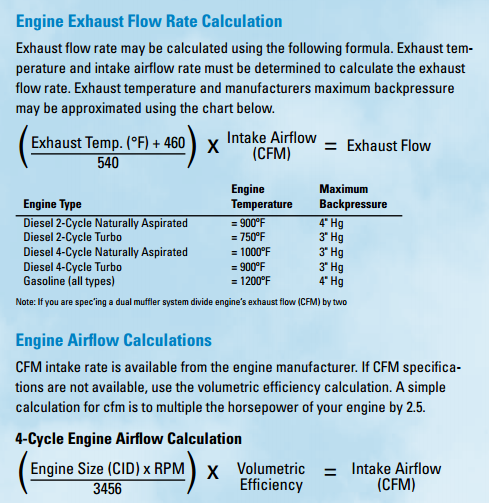
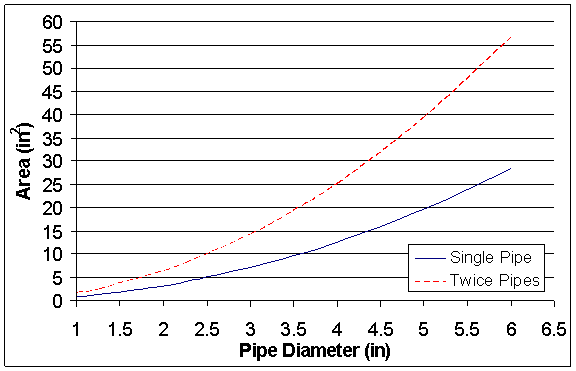
adding an (X) pipe effectively doubles the exhaust cross sectional area cutting the resistance to exhaust flow restriction nearly in half
back pressure ALWAYS tends to reduce the cylinder fill and scavenging efficiency, this is not a guessing game.
you can simply measure back pressure in the exhaust every500 rpm from about 3000rpm to where ever your upper rpm limit lies, and if its ever over about 2 psi your losing power.
in fact in a properly designed exhaust system you'll ideally run a negative pressure behind the exhaust valves as they open,
helping the exhaust scavenge the cylinders, over most of the peak rpm range.
thus any significant back pressure is always going to reduce the potential power.
a correctly designed exhaust header can induce a low or negative pressure wave at the exhaust port as the exhaust valve opens to greatly increase cylinder scavenging and cylinder fill efficiency over a carefully designed in rpm band of a correctly tuned engine, provided the other factors like compression,cam timing and a low restriction exhaust system past the header collectors are used in a well matched combo. you can get a very good idea, as to your exhaust systems back pressure if you have a muffler shop in your area that will test the back pressure in your car for you with a pressure gauge and a DB meter for noise levels., but if you do, you will be one of the very few people that bother to test and deal in FACTS , PROVEN BY TESTING,rather than make guesses like the vast majority.
I'm certainly not picking on anyone here, but I see similar responses all the time,
when I ask what the back pressure in the header collectors reads on a gauge, at peak rpm levels,
and where guys just almost always assume the exhaust is fine simply because they read a chart some place that said for example a dual 2.5" exhaust will handle 400 hp or some other figure.
yes theres other factors at work here, but don,t over look a potentially restricted exhaust with out testing.
when I ask about back pressure at peak rpm levels and get that deer in the head lights look, and I,m amazed that almost everyone assumes that the exhaust must be fine! and so few guys take the time to get out a vacuum/pressure gauge , and plumb in a bung and port adapter and actually measure the exhaust back pressure at peak rpm levels, I can remember only one other guy I've dealt with in the last 45 years who had actually done that and used a fuel/air ratio meter to help tune his car before I got involved and asked about the exhaust back pressure and individual exhaust port temps. which can be very useful in locating tuning problems or fuel/air ratio distribution issues
heres the one I use and recommend

http://www.professionalequipment.com/ex ... ermometer/
you can,t make intelligent decisions without facts, and you get the facts by testing!
and it should be obvious that testing needs to be done under the current operational conditions at the rpm range that your concerned with.
A stock automotive exhaust might have over 5 psi OF BACK PRESSURE, AT PEAK RPMS WHERE EXHAUST FLOW IS AT MAX, or even more in a few cases, of back pressure in the exhaust system if measured at the collectors at max engine rpm, with a decent accurate pressure gauge, while a good aftermarket exhaust system will roughly cut that in half to the 1-3 psi range. BUT An excellent performance exhaust will get down in the 1-1.5 psi or LOWER restriction to flow range at max engine rpm. keep in mind that the efficiency of the headers scavenging the cylinders , and helping to draw in the following intake charge,is almost totally dependent on maintaining a very low flow restriction or back-pressure in the collectors ,especially at mid and upper rpm levels, any significant restriction to flow reduces the effectiveness of the headers ability to scavenge the cylinders by allowing the previous exhaust gas inertia mass to help drag in the next intake charge following it into that cylinder as it exits the cylinder thru the tuned headers primary's.
http://www.superchevy.com/how-to/ex...y-horsepower-but-which-is-best-for-your-ride/
http://www.epi-eng.com/piston_engine_technology/exhaust_system_technology.htm



3" o.d = 2.87" diam. inside--approximately 6.5 sq inches of area
2.75 o.d = 2.62"diam. inside--approximately 5.4 sq inches of area
2.5 o.d = 2.37" diam. inside--approximately 4.4 sq inches of area
2.25 o.d = 2.12" diam. inside--approximately 3.5 sq inches of area





one of the most common and least tested, factors in most engine build ups is testing for restrictions to building increased horsepower. a huge problem is in restrictive exhaust systems that can not effectively allow the headers to scavenge the burnt gases from the cylinders, a good open collector on a well designed header can reduce the back pressure at the exhaust port to a negative pressure significantly increasing cylinder scavenging out the exhaust, thus helping draw in a fresh intake charge.
your sure to find some blog or posted info that shows if you go too large in exhaust pipe diameter,
the engine tends to lose some off idle to about 3000rpm,torque
this is not the result of a loss in back pressure ,
its the result of a loss in exhaust gas velocity and the resulting loss of inertial energy available to scavenge the cylinders,
this is NOT an issue with full length header,
s that will almost ALWAYS work more effectively with near zero back pressure,
past the header collectors, in a properly designed exhaust
is exhaust back pressure killing performance ?
obviously the volume of your engine exhaust increases with the rpm range, so while the stock exhaust may be fine under 5500rpm it surely may be restrictive in the upper rpms, once you've installed better flowing heads and added a cam, after all the engineers at G.M. were matching the stock components not aftermarket parts.
its a fast easy test that needs to be done and more than a few cars running older cats are having a restricted exhaust that's hurting your performance badly, and because the problem tends to build up slowly many people don,t notice the gradual power loss
first thing you'll need to realize is that the TEST POINT needs to be after the header collector and in front of the CAT AND MUFFLERS. next thing you need to know is that to get a valid answer you'll need to have a long connector hose so someone in the pass seat can CLOSELY WATCH the gauge as you accelerate under load (FLOOR THE CAR THRU THE FIRST 1-2 GEARS and watch the pressure surge. readings above 1psi mean somethings partly restricted, readings above 3psi are hurting your performance BADLY ENOUGH THAT YOU SHOULD CORRECT THE RESTRICTION.
you'll occasionally see dyno tests that show something like stock rams horn exhaust manifolds, compared to shorty headers and one or the other shows a slight advantage, the fact they don,t mention is that for headers to work correctly and scavenge the engines cylinders at higher rpms there needs to be very little back pressure , in the exhaust system behind the headers, and if theres almost any restriction the headers can,t scavenge the cylinders efficiently. shorty headers and stock exhaust manifolds effectively use the inertia of the trapped exhaust gases in the stock exhaust to help drag out or scavenge the cylinders but its only effective at low and mid rpm ranges, it tends to be rather restrictive after about 4000rpm in most cars
the test kit is about $50.00

http://www.ntxtools.com/fuelsystem/tu24a.htm
OR SAVE SOME CASH
http://www.harborfreight.com/cpi/ctaf/d ... mber=93547
http://www.veryuseful.com/mustang/tech/engine/exhaustScavenging.pdf
YES TAKING THE TIME TO READ THRU THESE LINKS and SUB LINKS IS WELL WORTH THE EFFORT
I found this info posted else ware but its good info
Back pressure: The myth and why it's wrong.
I. Introduction
One of the most misunderstood concepts in exhaust theory is backpressure. People love to talk about backpressure on message boards with no real understanding of what it is and what it's consequences are. I'm sure many of you have heard or read the phrase "Hondas need backpressure" when discussing exhaust upgrades. That phrase is in fact completely inaccurate and a wholly misguided notion.
II. Some basic exhaust theory
Your exhaust system is designed to evacuate gases from the combustion chamber quickly and efficently. Exhaust gases are not produced in a smooth stream; exhaust gases originate in pulses. A 4 cylinder motor will have 4 distinct pulses per complete engine cycle, a 6 cylinder has 6 pules and so on. The more pulses that are produced, the more continuous the exhaust flow. Backpressure can be loosely defined as the resistance to positive flow - in this case, the resistance to positive flow of the exhaust stream.
III. Backpressure and velocity
Some people operate under the misguided notion that wider pipes are more effective at clearing the combustion chamber than narrower pipes. It's not hard to see how this misconception is appealing - wider pipes have the capability to flow more than narrower pipes. So if they have the ability to flow more, why isn't "wider is better" a good rule of thumb for exhaust upgrading? In a word - VELOCITY. I'm sure that all of you have at one time used a garden hose w/o a spray nozzle on it. If you let the water just run unrestricted out of the house it flows at a rather slow rate. However, if you take your finger and cover part of the opening, the water will flow out at a much much faster rate.
The astute exhaust designer knows that you must balance flow capacity with velocity. You want the exhaust gases to exit the chamber and speed along at the highest velocity possible - you want a FAST exhaust stream. If you have two exhaust pulses of equal volume, one in a 2" pipe and one in a 3" pipe, the pulse in the 2" pipe will be traveling considerably FASTER than the pulse in the 3" pipe. While it is true that the narrower the pipe, the higher the velocity of the exiting gases, you want make sure the pipe is wide enough so that there is as little backpressure as possible while maintaining suitable exhaust gas velocity. Backpressure in it's most extreme form can lead to reversion of the exhaust stream - that is to say the exhaust flows backwards, which is not good. The trick is to have a pipe that that is as narrow as possible while having as close to zero backpressure as possible at the RPM range you want your power band to be located at. Exhaust pipe diameters are best suited to a particular RPM range. A smaller pipe diameter will produce higher exhaust velocities at a lower RPM but create unacceptably high amounts of backpressure at high rpm. Thus if your powerband is located 2-3000 RPM you'd want a narrower pipe than if your powerband is located at 8-9000RPM.
Many engineers try to work around the RPM specific nature of pipe diameters by using setups that are capable of creating a similar effect as a change in pipe diameter on the fly. The most advanced is Ferrari's which consists of two exhaust paths after the header - at low RPM only one path is open to maintain exhaust velocity, but as RPM climbs and exhaust volume increases, the second path is opened to curb backpressure - since there is greater exhaust volume there is no loss in flow velocity. BMW and Nissan use a simpler and less effective method - there is a single exhaust path to the muffler; the muffler has two paths; one path is closed at low RPM but both are open at high RPM.
IV. So how did this myth come to be?
I often wonder how the myth "Hondas need backpressure" came to be. Mostly I believe it is a misunderstanding of what is going on with the exhaust stream as pipe diameters change. For instance, someone with a civic decides he's going to uprade his exhaust with a 3" diameter piping. Once it's installed the owner notices that he seems to have lost a good bit of power throughout the powerband. He makes the connections in the following manner: "My wider exhaust eliminated all backpressure but I lost power, therefore the motor must need some backpressure in order to make power." What he did not realize is that he killed off all his flow velocity by using such a ridiculously wide pipe. It would have been possible for him to achieve close to zero backpressure with a much narrower pipe - in that way he would not have lost all his flow velocity.
V. So why is exhaust velocity so important?
The faster an exhaust pulse moves, the better it can scavenge out all of the spent gasses during valve overlap. The guiding principles of exhaust pulse scavenging are a bit beyond the scope of this doc but the general idea is a fast moving pulse creates a low pressure area behind it. This low pressure area acts as a vacuum and draws along the air behind it. A similar example would be a vehicle traveling at a high rate of speed on a dusty road. There is a low pressure area immediately behind the moving vehicle - dust particles get sucked into this low pressure area causing it to collect on the back of the vehicle. This effect is most noticeable on vans and hatchbacks which tend to create large trailing low pressure areas - giving rise to the numerous "wash me please" messages written in the thickly collected dust on the rear door(s).
VI. Conclusion.
SO it turns out that Hondas don't need backpressure, they need as high a flow velocity as possible with as little backpressure as possible.
Turbo Exhaust Systems:
Some of you asked for a better explanation about restriction in a turbo exhaust, so here 'goes. To sum it all up, on a turbo car, the tighter and more restricted the exhaust housing of the turbo is, the faster you're going to spool your turbo... because the restricted gasses escape through the exhaust housing with more velocity (much like the garden hose description quoted above)... but with this restriction comes the downside. Less exhaust volume will be able to fit through that turbine housing once the turbo is spooled and starts squishing more air through the intake.
This is where the wastegate comes into play. The wastegate is actuated BEFORE the exhaust wheel in the exhaust housing. When it opens, whatever the diameter of your wastegate is gets added to your exhaust piping. Effectively increasing the capacity of the exhaust provided that everything downstream is large enough in diameter to handle it the extra flow. The main reason it does this is to prevent over-spooling the turbo. Once the turbo reaches its efficiency, it doesn't need to flow all the extra gasses through the turbine wheel, so the wastegate allows you to route the exhaust around the turbo... if it can't route enough exhaust around the turbo (restricted wastegate) then too much exhaust gas will be forced by the exhaust wheel and BOOST CREEP will occur as your turbo over-spools.
One way to prevent boost creep is to port the wastegate housing (if you have an internally gated turbo) or to replace the wastegate with a bigger unit. If that still doesn't work, then the problem is likely going to be a restriction in the exhaust downstream from the wastegate. Many overboosted car owners prefer to vent their wastegate dumps to the atmosphere. Not only is it illegal to bypass your catalytic converter, but it's loud as hell, gets your engine bay filthy, and clogs up your K&N like nobody's business; however, it nearly eliminates boost creep. It's a cheap and easy solution that fixes boost creep on a race car.
The best solution to boost creep is to route your wastegate dump past the catalytic converter and back into the exhaust. It will be a custom setup. Nobody makes this. Make it look clean and you'll pass emissions because they don't run your car hard enough to open the wastegate when doing emissions testing. You have to reach full boost for the wastegate to open, and since the exhaust runs through the cat until the wastegate opens, it all gets "cleaned" before it reaches the sniffer. With this setup, the wastegate will also be much quieter because it still runs through the muffler, and you won't trash your engine bay with black caustic funk.
Putting a separate catalytic converter on your wastegate dump is a stupid idea because you'll never get it hot enough to "light off" and start converting the carbon monoxide... so don't get any crazy ideas and create unnecessary exhaust restrictions.
Once compressed air comes into the mix with an engine, exhaust tuning has much less to do with making power. So what if you can milk another 3-5 hp out of a car with a tuned exhaust... the benefits of making an engine sustain an insane final compression ratio (boosted air x compression in the combustion chamber) has much more affect on making power if you can just get rid of the extra gasses it produces. Bigger is almost always better on a turbo setup. The only place where it isn't good is on the exhaust wheel where too big can = no chance of spooling your oversized turbo any time this year.
READ THE LINKS OR MISS A GREAT DEAL OF USEFUL INFO
http://www.uucmotorwerks.com/html_produ ... uemyth.htm
http://www.formula1-dictionary.net/exhaust_road_perf.html
ITS NOT RARE TO LOOSE 20% or more of your potential hp to a restricted cat on your exhaust, or restrictive mufflers or exhaust pipes that are too small and restrictive, no header can effectively scavenge your engine unless its got less than about 2 psi of back pressure at the peak rpm range, on most muscle cars youll want a 2.5"-3" diam. exhaust system with an (X) pipe as close to the header collectors as clearances under the car allow as a MINIMUM size exhaust and its been my experience that is RARE for a 3" dual exhaust with an (X) pipe to NOT allow a hot combo with over 400hp to produce some mid and upper rpm power gains.
if the exhaust pipes too small in cross sectional area the pipe acts like a long rather restrictive collector on the headers, this may be good for low rpm cylinder scavenging, but it usually kills peak hp potential, its best to tune the engines intake and exhaust to match the gearing and cam timing power curve. in an ideal set up the exhaust system beyond the header collectors has a very low restriction to flow, and there will be an (X) pipe to effectively double the exhaust cross sectional area to significantly lower resistance to exhaust flow restriction still further, to increase the header,s ability to scavenge the cylinders efficiently in the intended power & rpm band, keep in mind your goal is or should be in most cases to maximize the torque in the intended rpm range that your engine combo produces
Id highly suggest adding one of these 3" (X) to most exhaust systems
http://store5.yimg.com/I/exhaustpros_1769_9241795
looking thru an (X) pipe



A CORRECTLY TUNED SET OF HEADERS , MATCHED TO A CORRECTLY DESIGNED CAM TIMING HAS A SIGNIFICANT EFFECT ON INTAKE FLOW AND CYLINDER SCAVENGING EFFICIENCY, EXHAUST SCAVENGING CAN BE 5 TIMES STRONGER THAN THE PISTON, MOVEMENT INDUCED NEGATIVE PRESSURE (VACUUM) IN THE INTAKE RUNNERS


Id also point out that cam timing matched to the exhaust scavenging has a huge effect on potential intake flow rates



YES I KNOW YOU DON,T WANT TO READ THRU SUB LINKS,
BUT THEY CONTAIN A HUGE AMOUNT OF INFO
SO YOUR ONLY HURTING YOURSELF BY IGNORING THE RESOURCE
http://www.aa1car.com/library/exhaust_backpressure.htm
http://victorylibrary.com/mopar/header-tech-c.htm
http://www.popularhotrodding.com/engine ... 505em_exh/
http://www.pontiacstreetperformance.com/psp/exhaust.html
http://www.thrashercharged.com/tech_htm/exhaust.shtm
http://garage.grumpysperformance.com/index.php?threads/cooler-denser-air.8961/
http://www.pontiacstreetperformance.com ... haust.html
http://www.mk5cortinaestate.co.uk/calculator5.php
http://www.tuneruniversity.com/blog/201 ... -upgrades/
http://www.superchevy.com/technical/eng ... 05phr_exh/
http://www.nsxprime.com/FAQ/Miscellaneo ... theory.htm
viewtopic.php?f=56&t=3049&p=8053&hilit=oxygen+sensors#p8053
http://www.veryuseful.com/mustang/tech/ ... enging.pdf
http://www.boyleworks.com/ta400/psp/exhaust.html
http://www.aa1car.com/library/exhaust_backpressure.htm
http://www.superchevy.com/technical/eng ... index.html
http://www.tuneruniversity.com/blog/201 ... -upgrades/
http://www.pontiacstreetperformance.com ... haust.html
http://www.underhoodservice.com/Article ... nosis.aspx
http://www.centuryperformance.com/exhau ... g-137.html
http://www.asia.donaldson.com/en/exhaus ... 053747.pdf
http://www.burnsstainless.com/TechArticles/Theory/theory.html
http://grapeaperacing.com/GrapeApeRacing/tech/exhaustheaders.cfm
the short answer is ANY BACK PRESSURE IS BAD!
what your trying to do with a correctly designed exhaust is to have the majority of the exhaust system act like extended collectors on the headers, in effect using the inertia of the hot exhaust pulses from each cylinder to cause a cyclic low pressure wave to be timed to assist the next firing cylinders to scavenge the cylinders
keep in mind installing an (X) almost increases the effective cross sectional area,of the dual exhaust ,to double what it had been behind a single header collector, by doubling the area that the exhaust flow sees, dropping the restriction to flow almost in half
http://www.antechlabs.com/K0GFM/pipechart.gif
heres the info you need,
length
http://www.engr.colostate.edu/~allan/fluids/page7/PipeLength/pipe.html
diam.
well worth reading
http://victorylibrary.com/mopar/header-tech-c.htm
http://home.flash.net/~ivc1/cobra/xpipes.html
http://www.superchevy.com/technical/eng ... index.html
http://www.s262612653.websitehome.co.uk ... /heads.htm
to adjust for your altitude
http://rshelq.home.sprynet.com/density_altitude.htm
and if you want to get it perfect you should use your DYNAMIC COMPRESSION RATIO VOLUME in the formula at the rpms for peak hp that your engine makes
http://cochise.uia.net/pkelley2/DynamicCR.html
most of the time that comes out close to the same as the static cylinder volume at the peak torque f.y.i.
LET ME ASK THIS QUESTION?
WHATS THE FIRST THING YOU DO AT THE TRACK TO YOUR EXHAUST SYSTEM?
you open the headers to have less back pressure correct!!
BACK PRESSURE IS BAD, BAD,BAD, the idea has gotten around that you need back pressure to build torque, FALSE!!!!!! that IDEA was prevalent because if you stick too large of an exhaust pipe on a low rpm engine it loses the ability to scavage the cylinders with the exhaust gas pulse in the exhaust with stock exhaust manifolds, some how the old wife's tale got around that you needed back pressure...FALSE.. what you need was EFFECTIVE CYLINDER SCAVENGING which the smaller tail pipe diam. was providing by acting like the collector on a set of headers!if you have headers , especially full length headers with a merge type collector you can,t make the exhaust too large,THINK ABOUT IT! the first thing you do at the track is un-cork your headers....why? because YEARS OF TESTING PROVES, less BACK PRESSURE MAKES MORE HP WITH HEADERS!!!! now some one is saying yeah but that's at the track and your running the engine at 5000rpm-6500rpm , well true and a good point because we typically only run 1000rpm-3000rpm on the street but look here,your stock exhaust if fine for the original intended 1000rpm-5000rpm band in most cases , but increase engine displacement,change the cam timing , on that added displacement,increase cylinder head and intake flow rates etc. and buzz that engine to 6000rpm and you'll soon find the stock exhaust systems pathetic at the upper rpm ranges, causing a very noticeable restriction to exhaust flow.
guys think simply adding headers cures this, but headers can,t function at near full potential efficiency unless the exhaust system mounted behind the collectors offers only a very minimal restriction. gaining 40hp or more is very common when adding headers and a low restriction exhaust system.
http://www.engr.colostate.edu/~allan/fluids/page7/PipeLength/pipe.html
what it shows clearly is the collector on a low rpm engine needs to be about 10ft long for max effect so you need an exhaust that works with a collector that's about 20" long at 6000rpm and one 10 feet long at idle, THAT'S WHERE THE IDEA OF TOO LARGE A EXHAUST comes from but as long as you follow these rules you'll be fine, READ THIS,
http://victorylibrary.com/mopar/header-tech-c.htm
btw Im writing this like this to get you guys to think about it then we will look into the answers of how to get both ends of the rpm range covered and yes Im leaving out some info on purpose
http://autolounge.net/calculators/exhau ... izing.html
most exhaust pipe is 16 gauge, or .065 wall thickness
http://www.engineersedge.com/gauge.htm
How do you judge the i.d of a pipe?
3" o.d = 2.87" diam. inside
2.75 o.d = 2.62"diam. inside
2.5 o.d = 2.37" diam. inside
2.25 o.d = 2.12" diam. inside
is exhaust back pressure killing performance ?
its a fast easy test that needs to be done and more than a few cars running older cats are having a restricted exhaust that are noticeably hurting your performance , and because the problem tends to build up slowly many people don,t notice the gradual power loss
first thing you'll need to realize is that the TEST POINT needs to be after the header collector and in front of the CAT AND MUFFLERS. next thing you need to know is that to get a valid answer you'll need to have a long connector hose, and a reliable pressure gauge, so someone in the pass seat can CLOSELY WATCH the gauge as you accelerate under load (FLOOR THE CAR THRU THE FIRST 1-2 GEARS and watch the pressure surge. back pressure readings above 1psi mean somethings partly restricted, readings above 3psi are hurting your performance noticeably.
this gauge will work
http://www.harborfreight.com/cpi/ctaf/d ... mber=93547
you drill a 1/8" hole in the collector to insert a temporary test probe made from 1/8" copper tubing attached to a section of vinyl hose back to the test gauge, angle or point the end of the test probe tube,toward the exhaust exit not the engine, that hole you drill for test access can easily be brazed closed after the test, OR in an ideal world you weld a 1/8" Nation Pipe Thread bung on the collector, so you can test with a removable screw threaded adapter and close the threaded bung with a brass plug when your done, a buddy reads the gauge with the line run into the passenger seat and the gauge or in an ideal world you mount the gauge in the car as a reference for tuning
the test kit is about $50.00
http://www.jdsdiagnostic.com/eptspage.htm
ITS NOT RARE TO LOOSE 20% or more of your hp to a restricted cat
your unlikely to lose much if any hp especially if you install an (H) pipe just before the reduction in tail pipe dia. and use a gradual reducer to change from 3' to 2.5" mostly because the exhaust gases have cooled a great deal by the time they reach that point in your exhaust system and with that heat loss a reduction in volume and potential back pressure

http://www.jegs.com/cgi-bin/ncommerce3/ProductDisplay?prrfnbr=1313&prmenbr=361

http://www.jegs.com/cgi-bin/ncommerce3/ProductDisplay?prrfnbr=1306&prmenbr=361
http://store.yahoo.com/exhaustpros/hustxpi.html
http://store5.yimg.com/I/exhaustpros_1775_13682224
http://www.summitracing.com/search/?keyword=exhaust cones&dds=1
IF your trying to reduce noise levels, you can buy or fabricate these cones that tend to break up and reduce exhaust noise, once installed in the exhaust, without producing much of a restriction since the total surface area of the mini holes is greater the the pipes cross sectional area
the tabs can be tack welded or sheet metal screw attached, and adding an (X) pipe near the collectors and an additional (H) near the muffler entrance point tends to mellow the tone

being a bit pragmatic here, Id say that its rather rare for a hot street/strip car combo with 400 cubic inches or less and under 500 hp that probably 75% of us drive to need an exhaust larger than dual 3" pipes with an (X) and that's usually what Ive found works on most street strip cars.
now obviously if your building something significantly larger or more powerful you'll want to do some calculation before selecting an exhaust design, but what always amazes me is how few people bother to buy and use a simple vacume/pressure gauge to actually test and measure back pressure.
without, testing and having the facts,and knowing what your dealing with it seems foolish to rush out and spend hundreds of dollars on a new exhaust that may or may not solve your problems or to ignore a problem that you can easily test for and verify before spending any money on a problem you can prove is caused by a restrictive exhaust system, basing your parts selection on what your trying to accomplish, and whats required to reach your goal, rather than random guess work seems to be the cheaper route in the long run in my opinion.
drilling a small easily re-welded test hole in the header collector , or an adapter on an oxygen sensor bung gives you access for testing back-pressure
you might be surprised at what a few tests show you and how much time and money you can avoid wasting

http://www.harborfreight.com/fuel-pump- ... 93547.html
http://www.harborfreight.com/fuel-pump- ... 93547.html
a simple vacuum gauge CONNECTED TO MANIFOLD VACUUM will be a surprisingly accurate tool to diagnose problems,providing you know how to use it.
you don,t need an expensive tool, while your testing you may as well connect it to your carbs intake plenum or throttle body plenum as a next test, because if your pulling over about 1.5" of vacuum at wide open throttle the carb or throttle body your using is a bit restrictive, and if you restrict the exhaust or intake flow it hurts power[/color]
BTW if youve got one of these nearly worthless (for a true high hp application)fuel filters, that can break and cause a fire hazard,

they can be quite useful inserted in the vacume line between the exhaust or intake your testing and the gauge your testing with as they make a rather effective pulse damper or reducer that limits the gauge needle rapidly twitching making it harder in some applications to get a clear reading
A CORRECTLY TUNED SET OF HEADERS , MATCHED TO A CORRECTLY DESIGNED CAM TIMING HAS A SIGNIFICANT EFFECT ON INTAKE FLOW AND CYLINDER SCAVENGING EFFICIENCY, EXHAUST SCAVENGING CAN BE 5 TIMES STRONGER THAN THE PISTON, MOVEMENT INDUCED NEGATIVE PRESSURE (VACUUM) IN THE INTAKE RUNNERS




these threads may also help
UNLESS you match ANY header with a TRUE low restriction exhaust its can NOT possibly work to NEAR its FULL potential, headers are designed to SCAVENGE the cylinders of oil burnt exhaust gases and INCREASE the percentage of fresh fuel air mix, if theres any significant back pressure beyond the header collectors that cuts the headers efficiency way down
http://forum.grumpysperformance.com/viewtopic.php?f=56&t=1730
http://forum.grumpysperformance.com/viewtopic.php?f=56&t=3155
http://forum.grumpysperformance.com/viewtopic.php?f=56&t=1503


adding an (X) pipe effectively doubles the exhaust cross sectional area cutting the resistance to exhaust flow restriction nearly in half
Last edited by a moderator:

